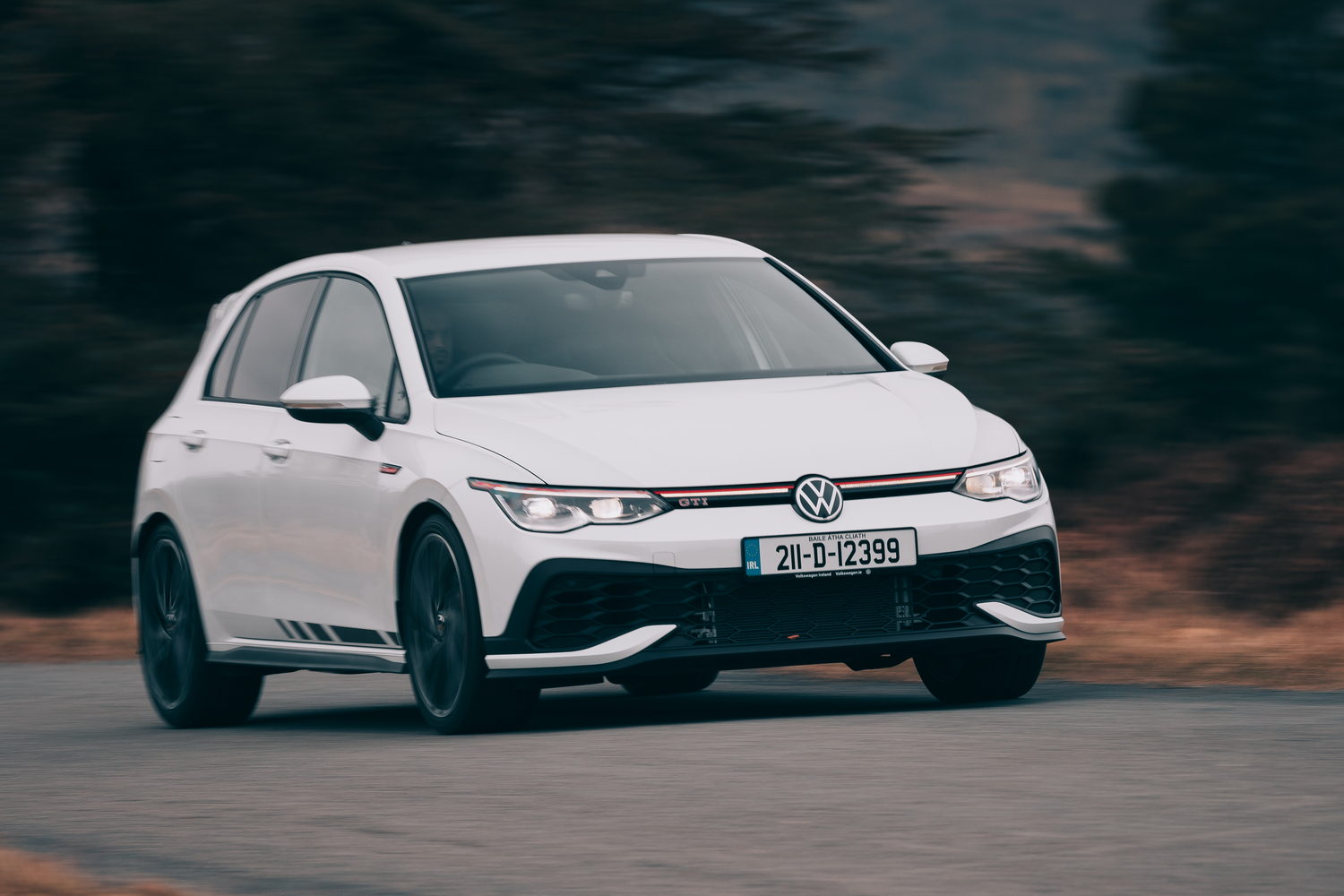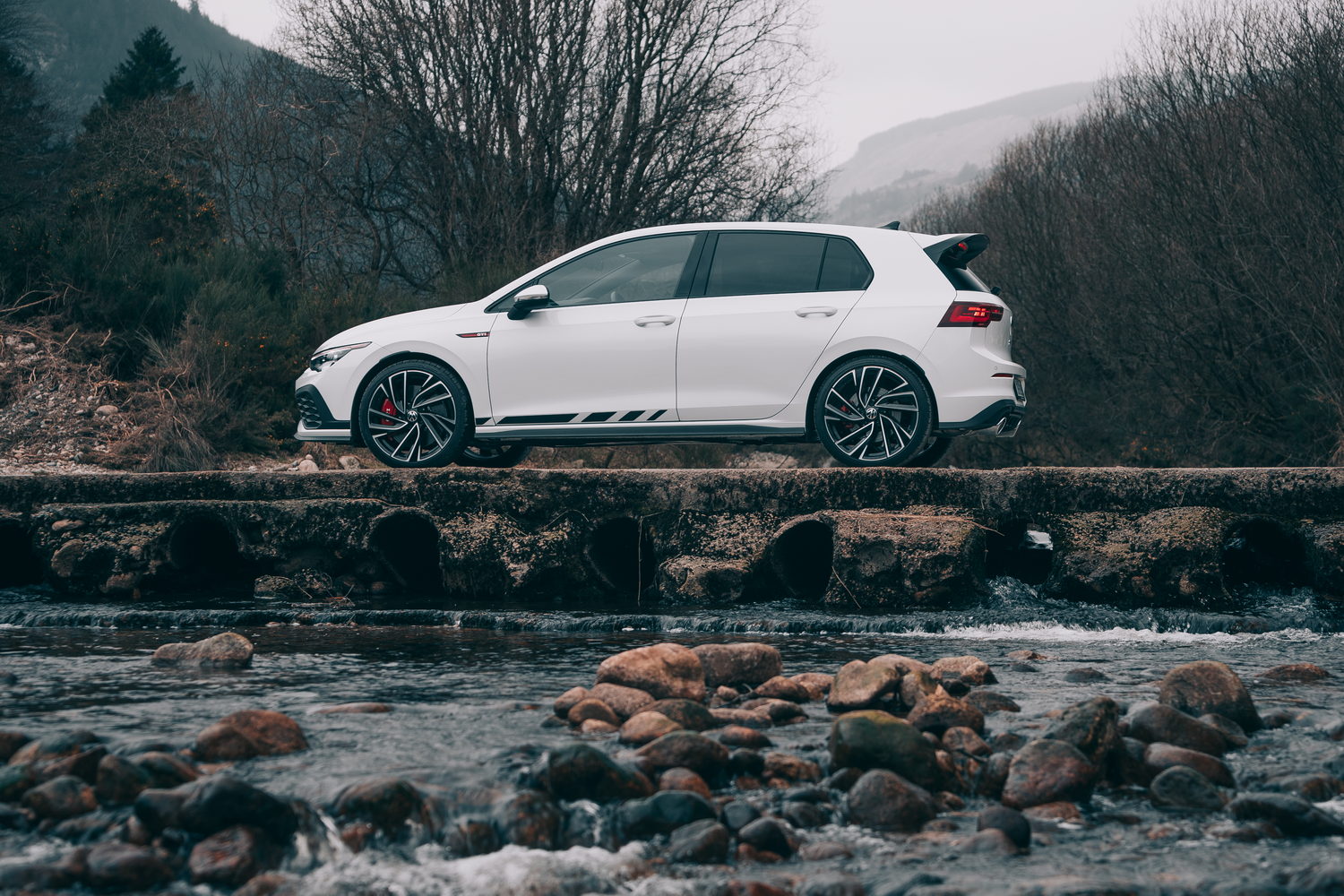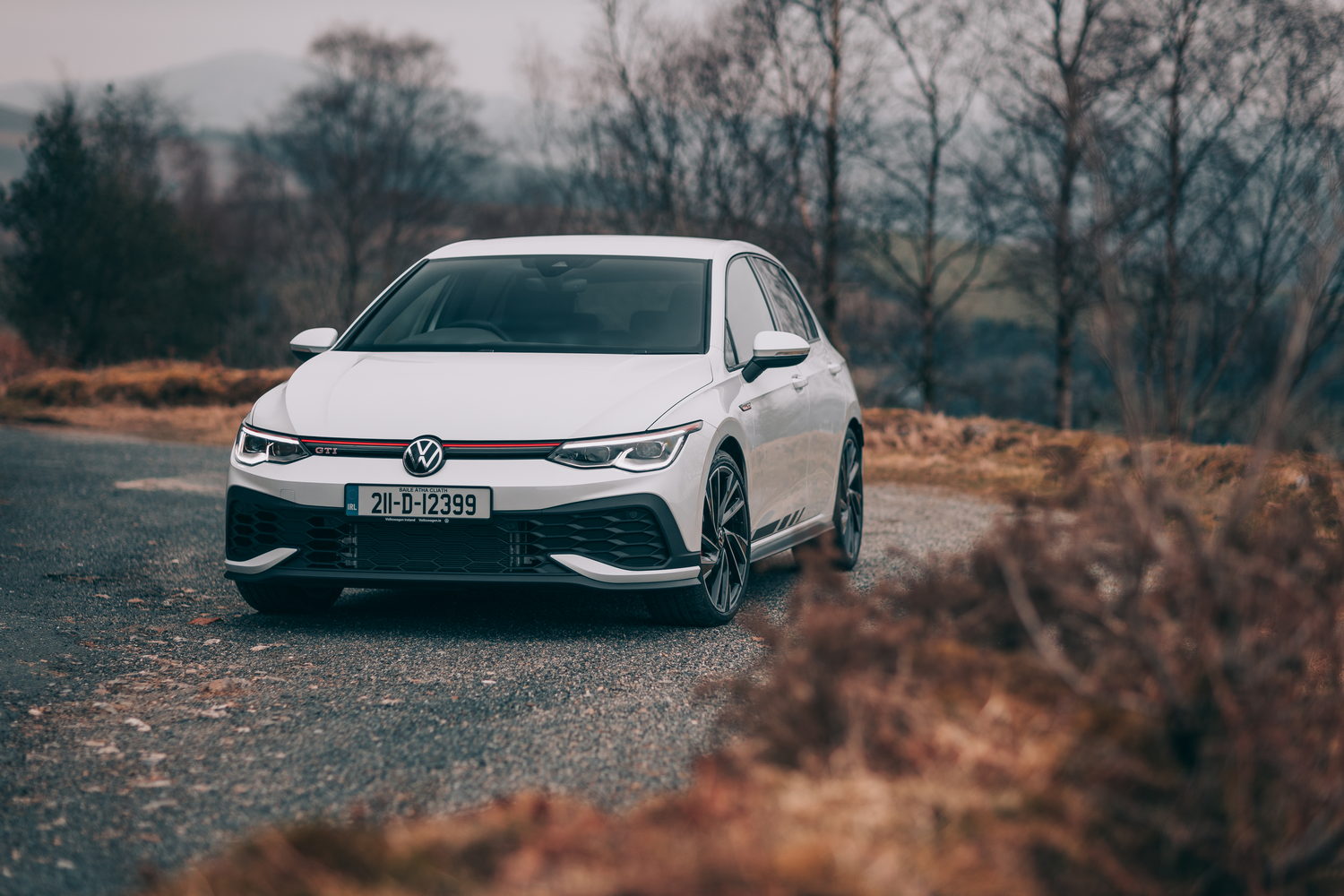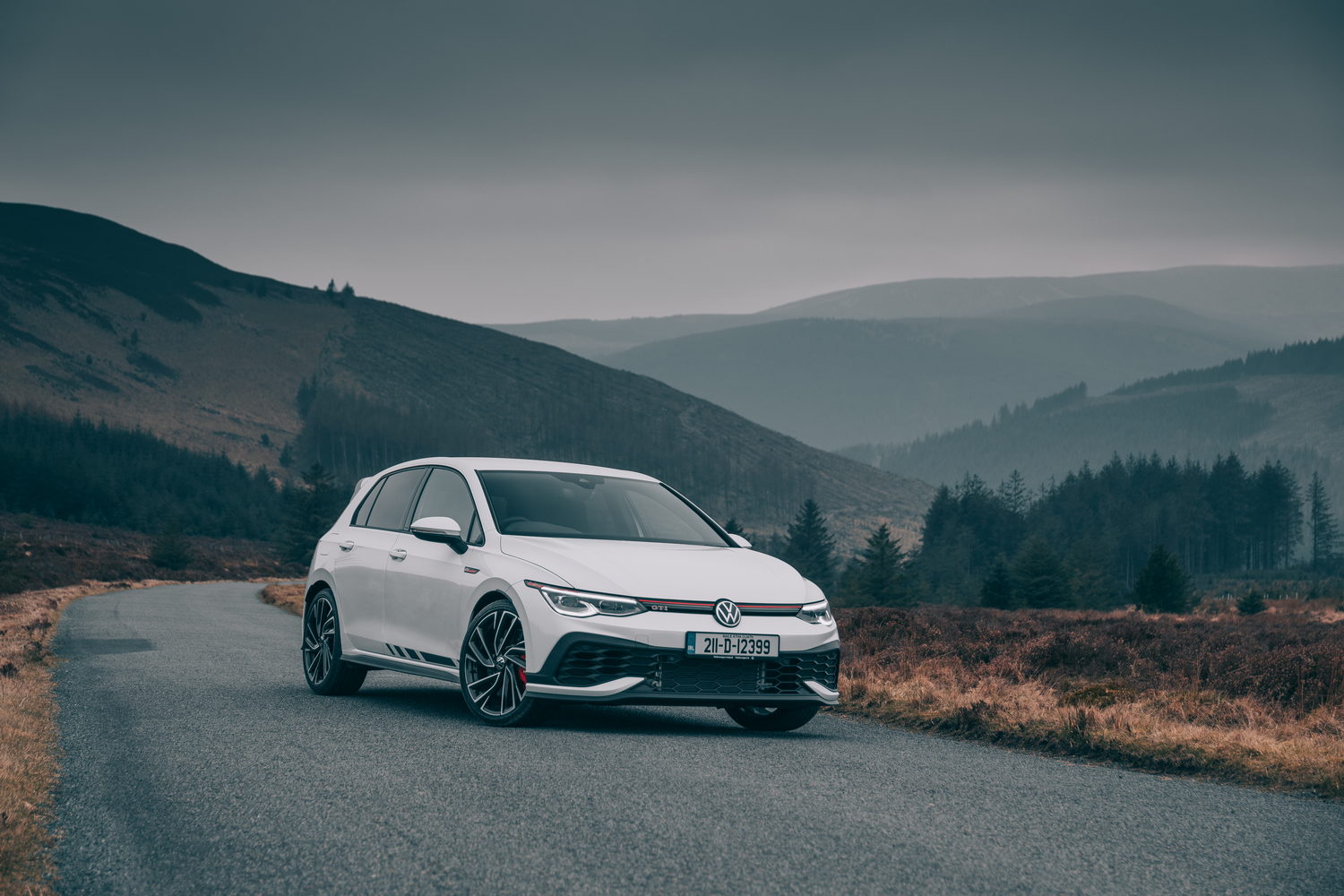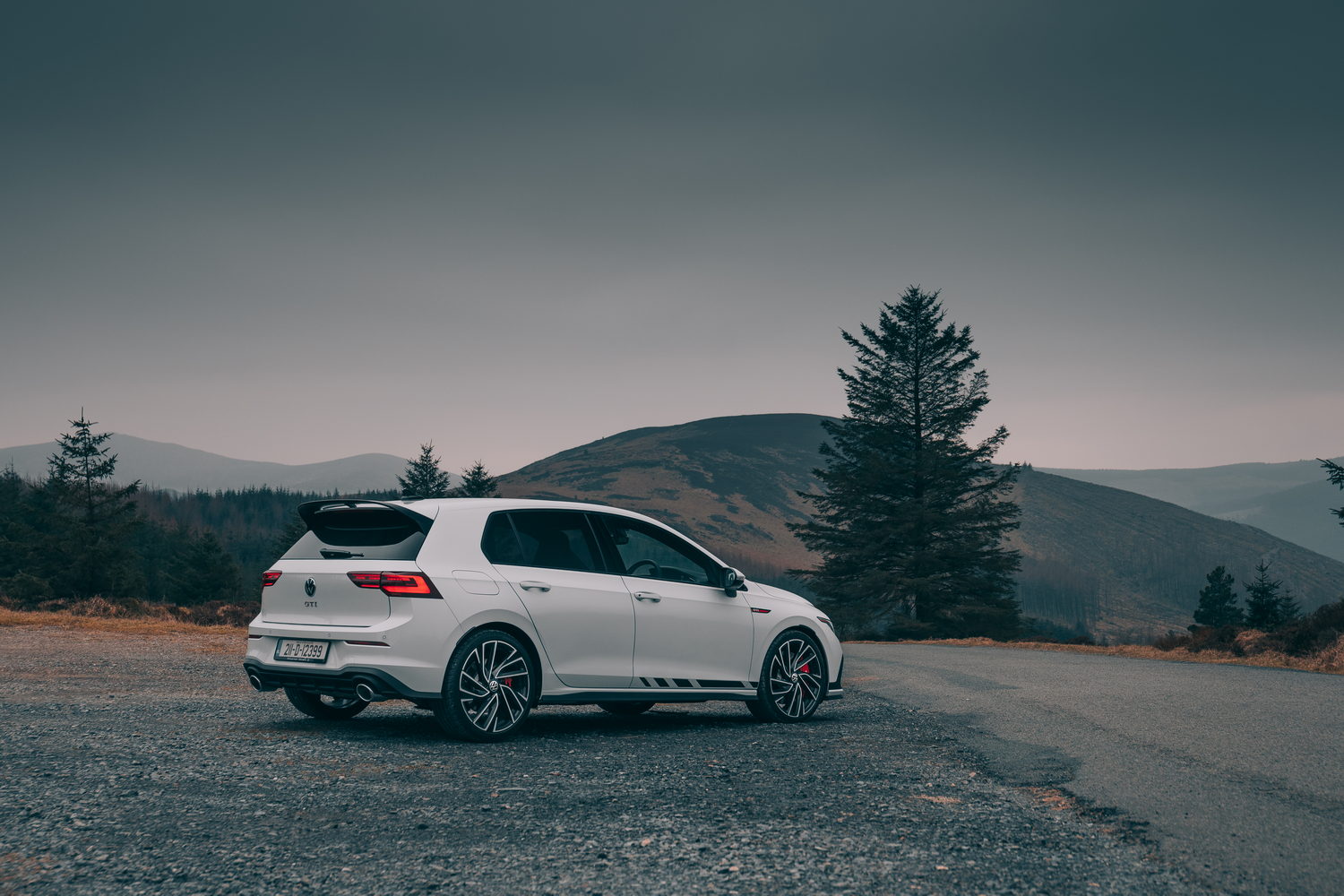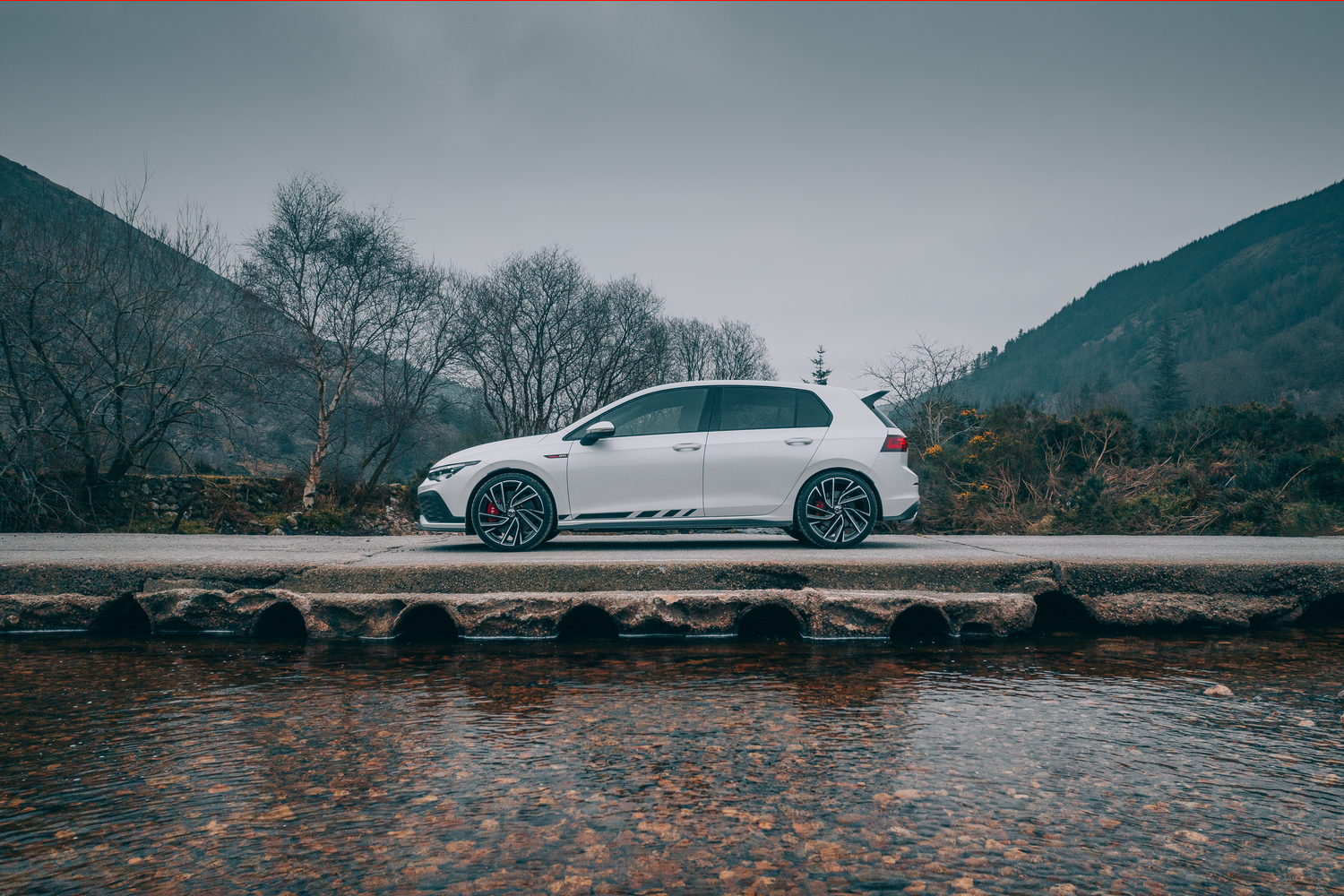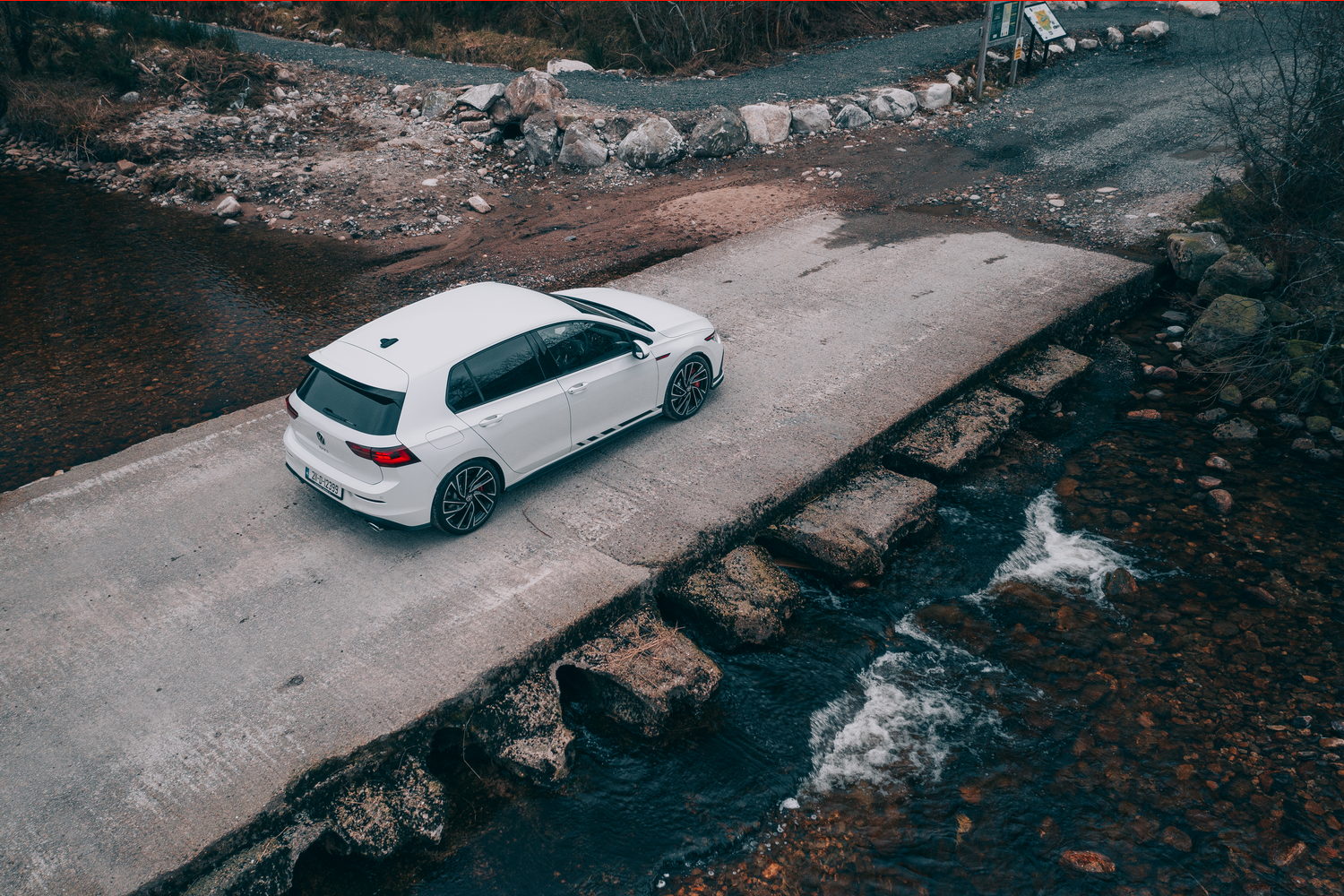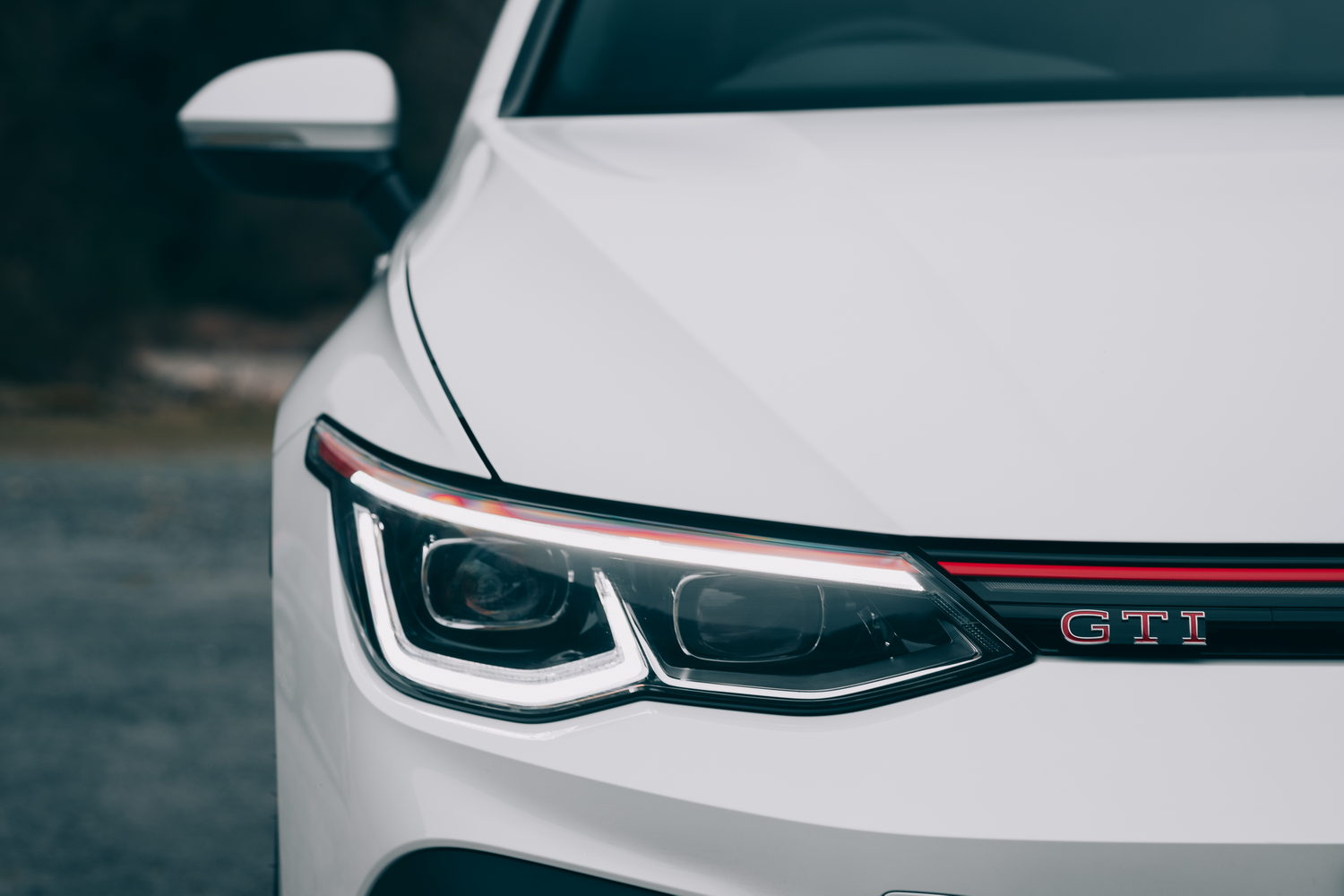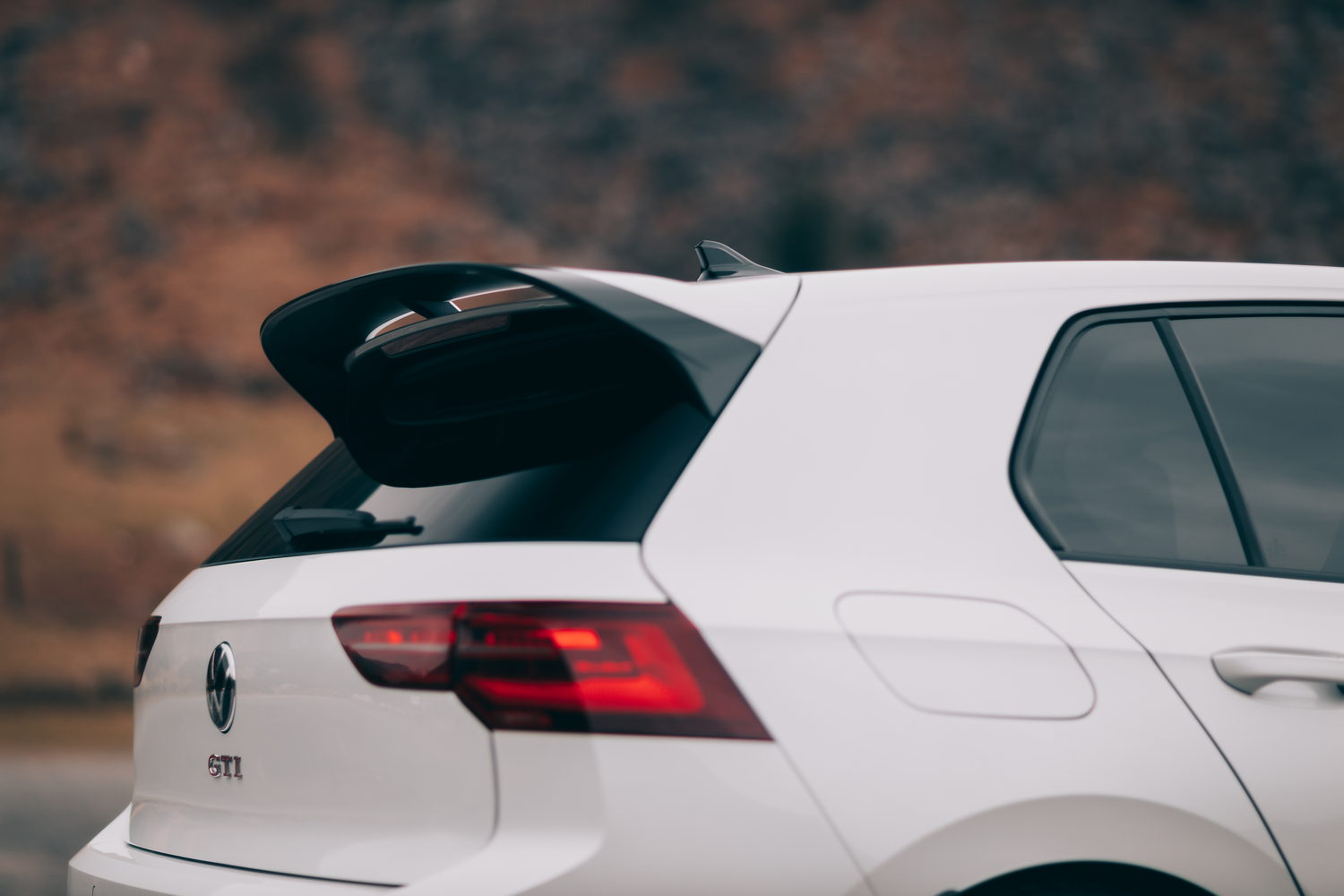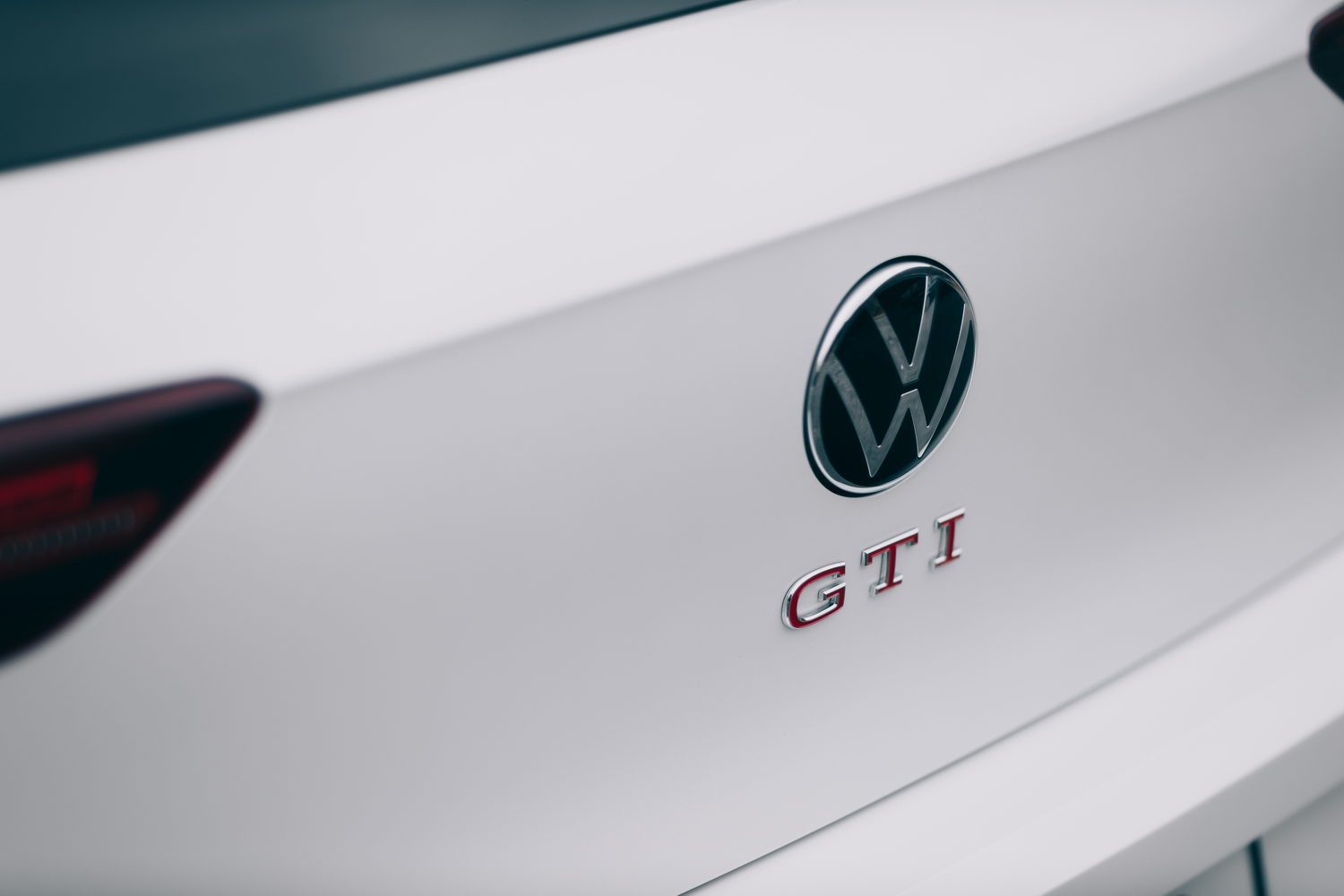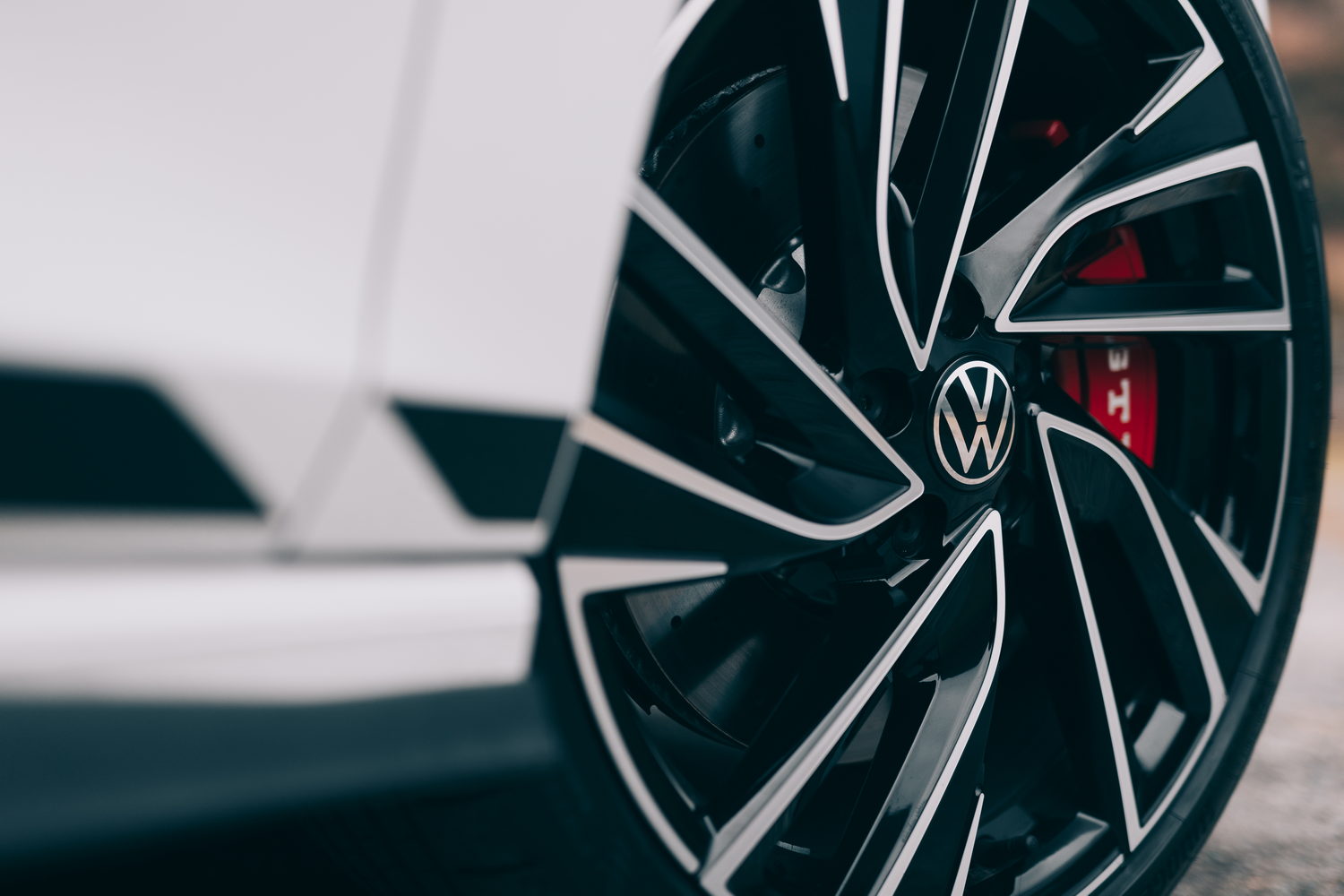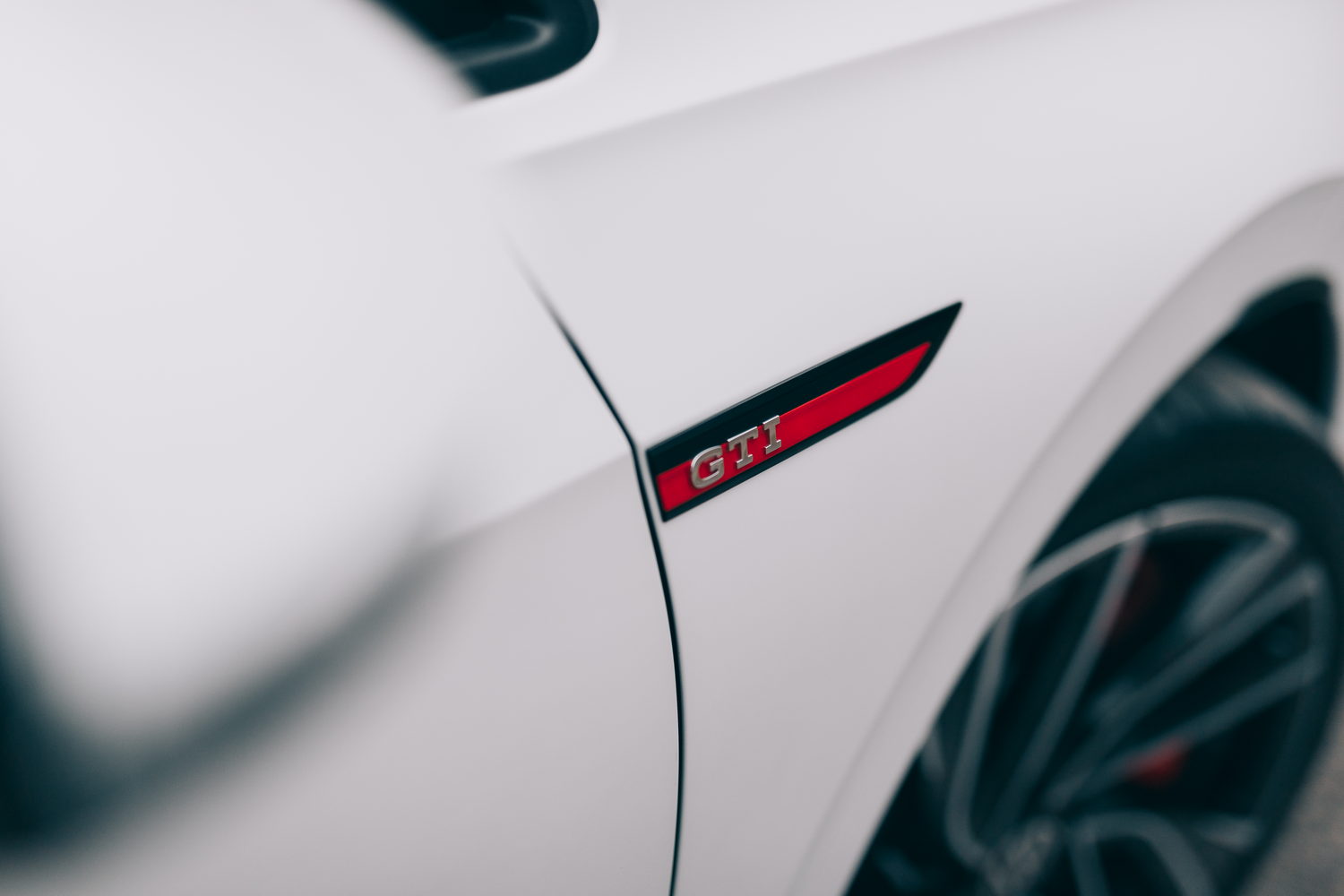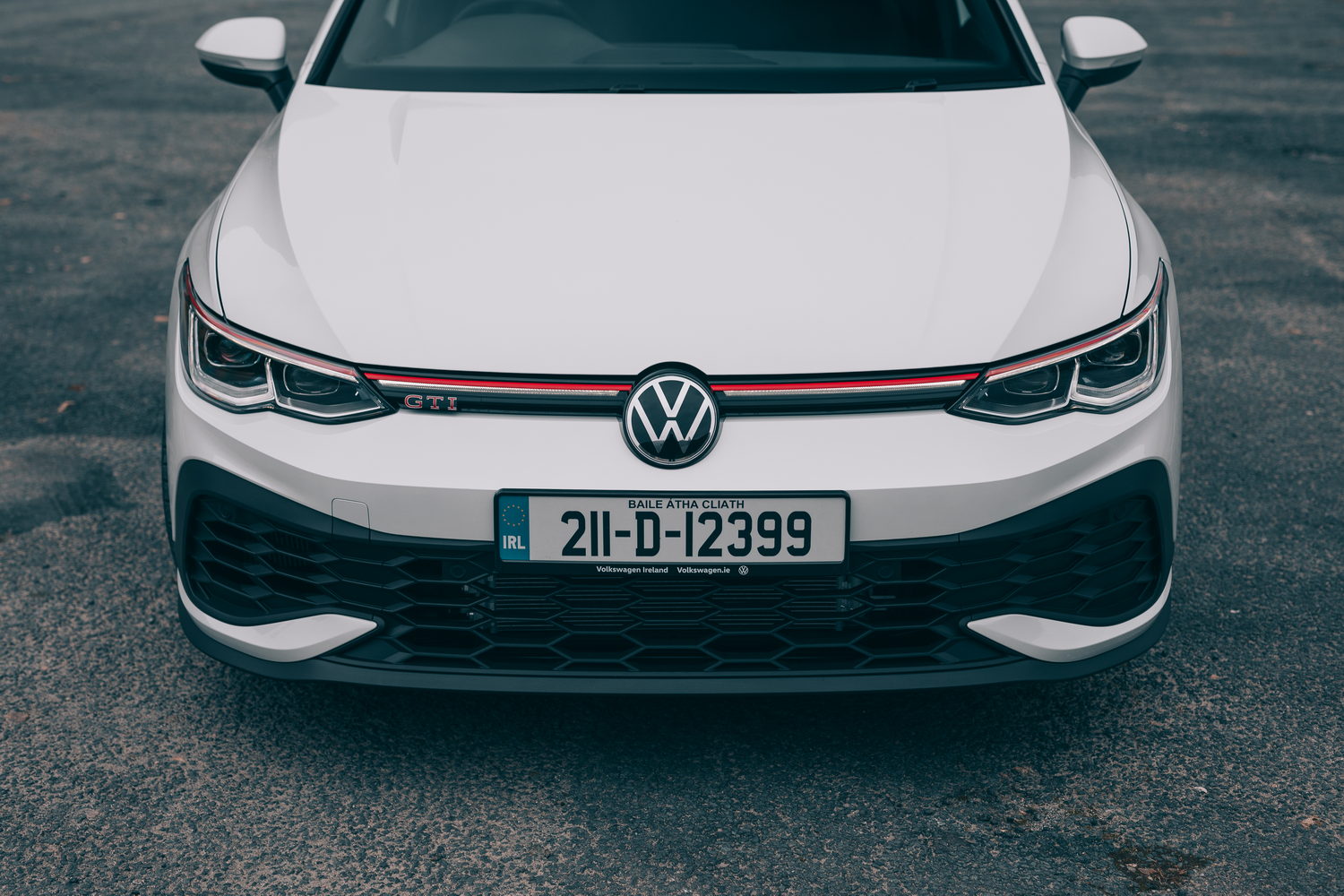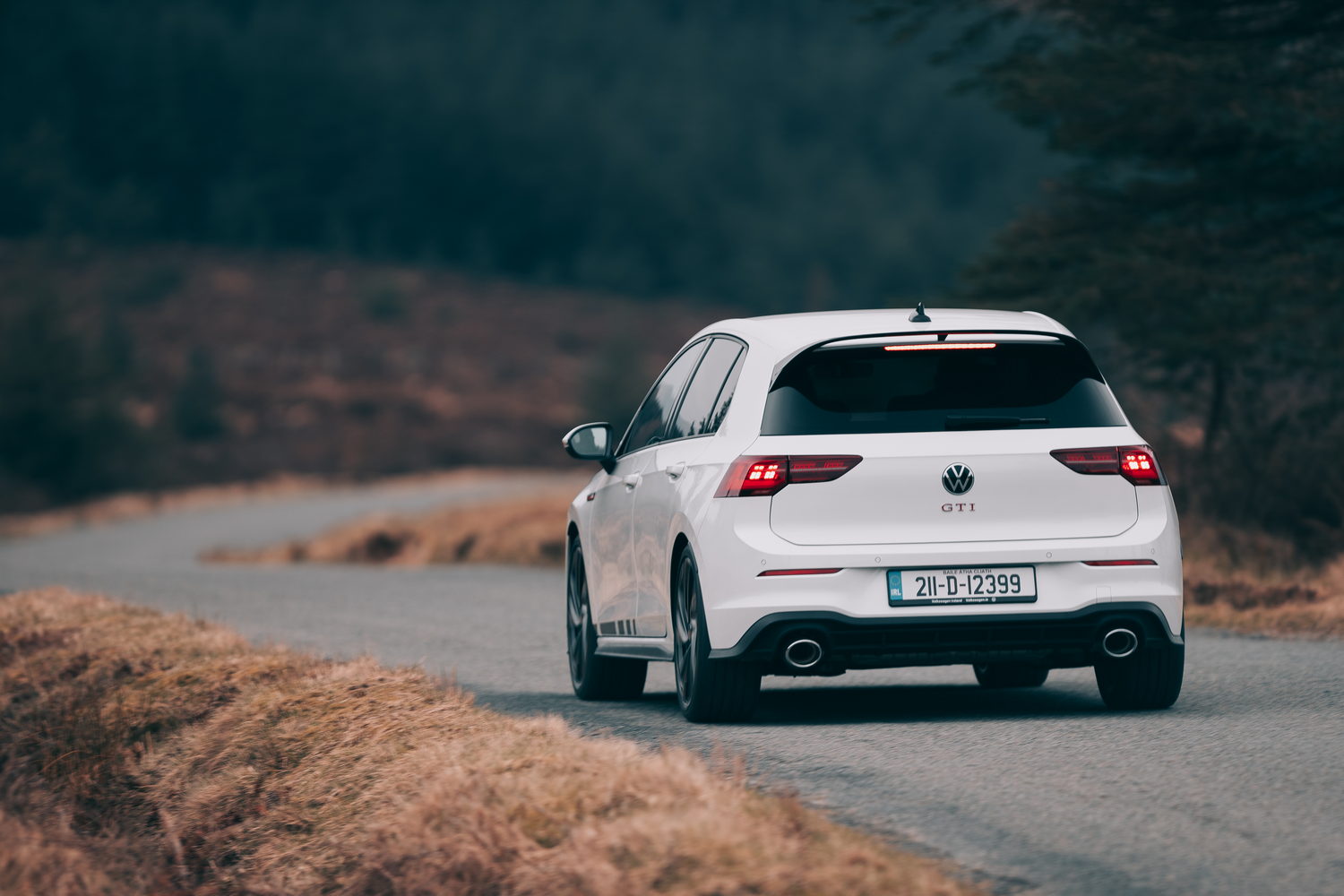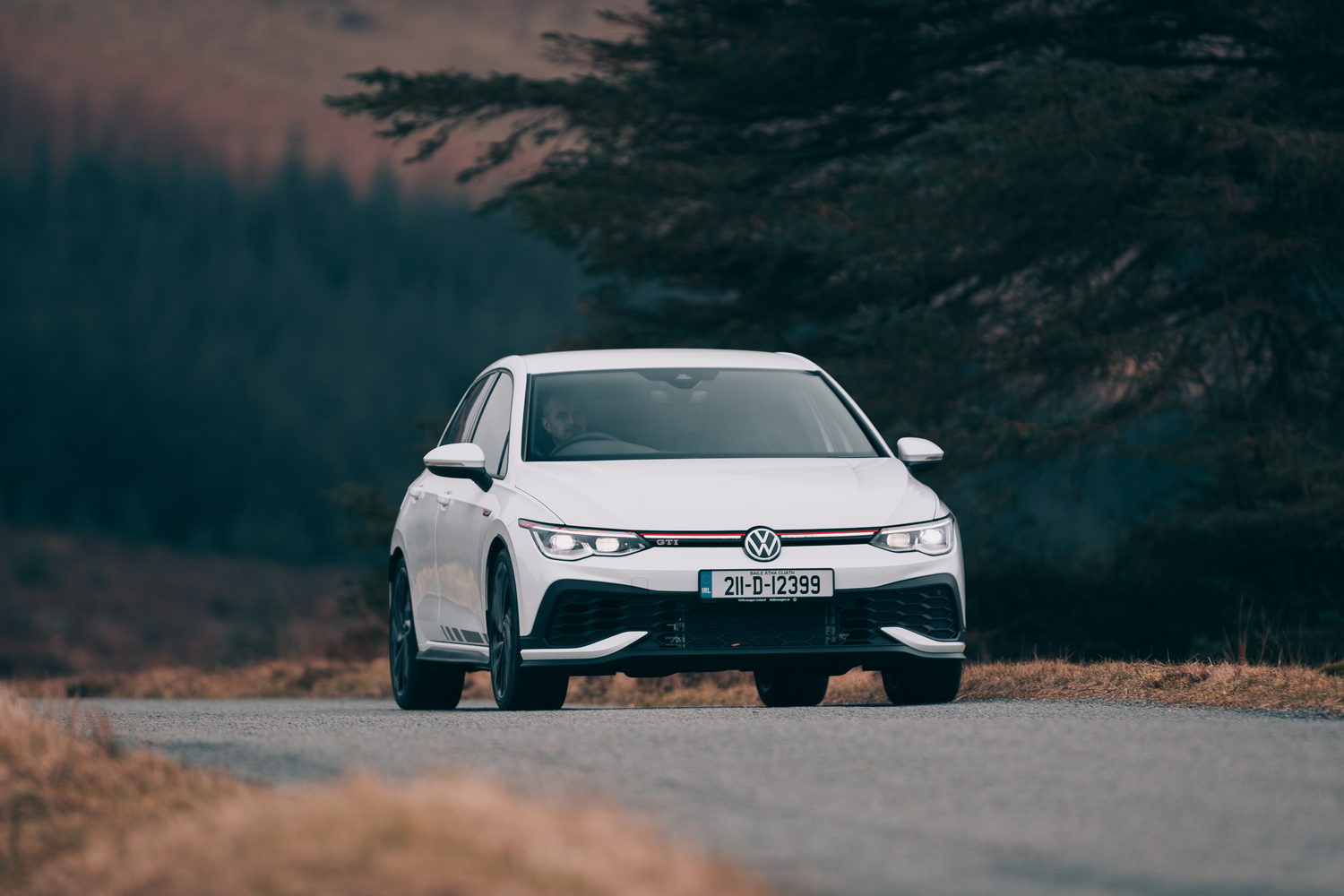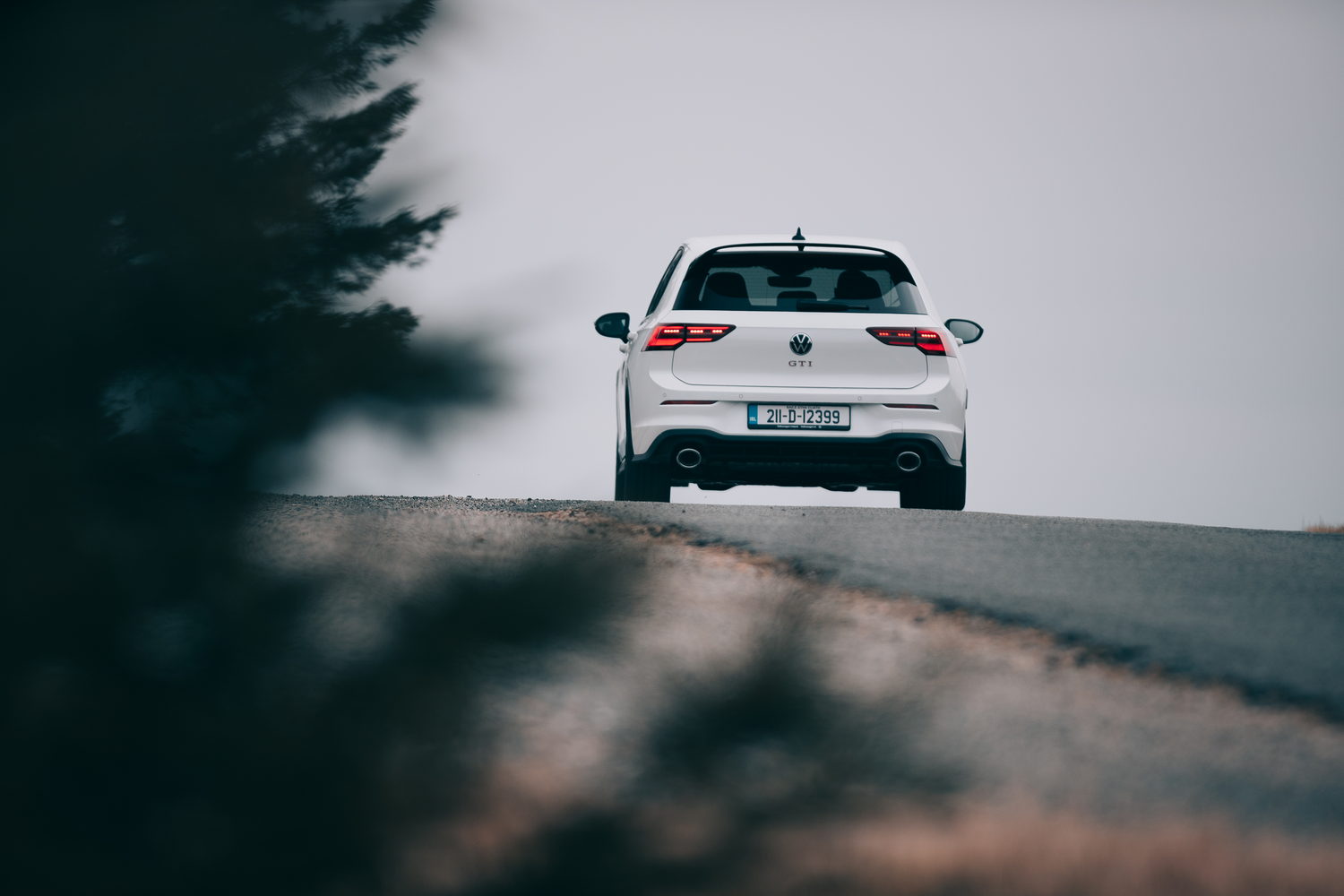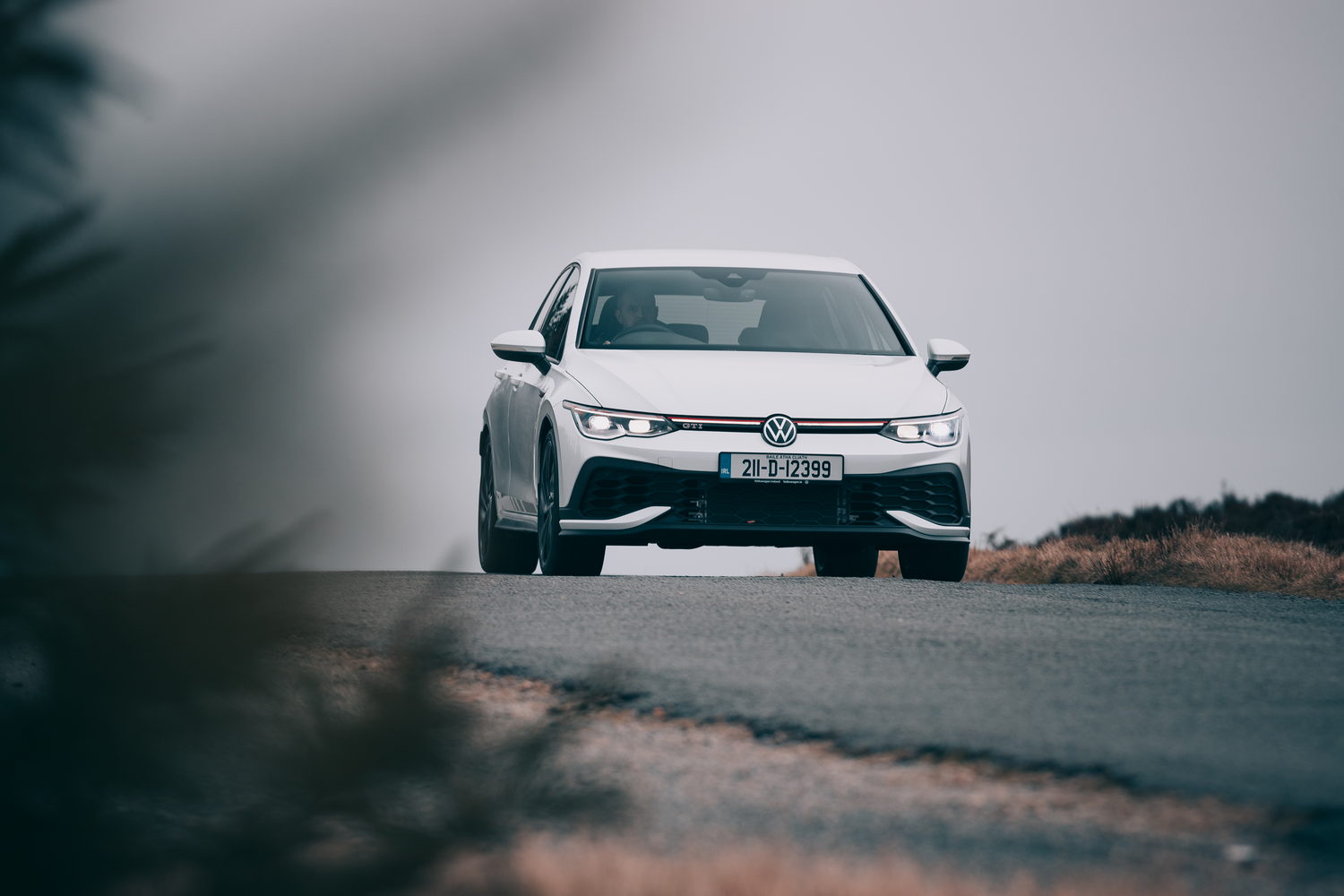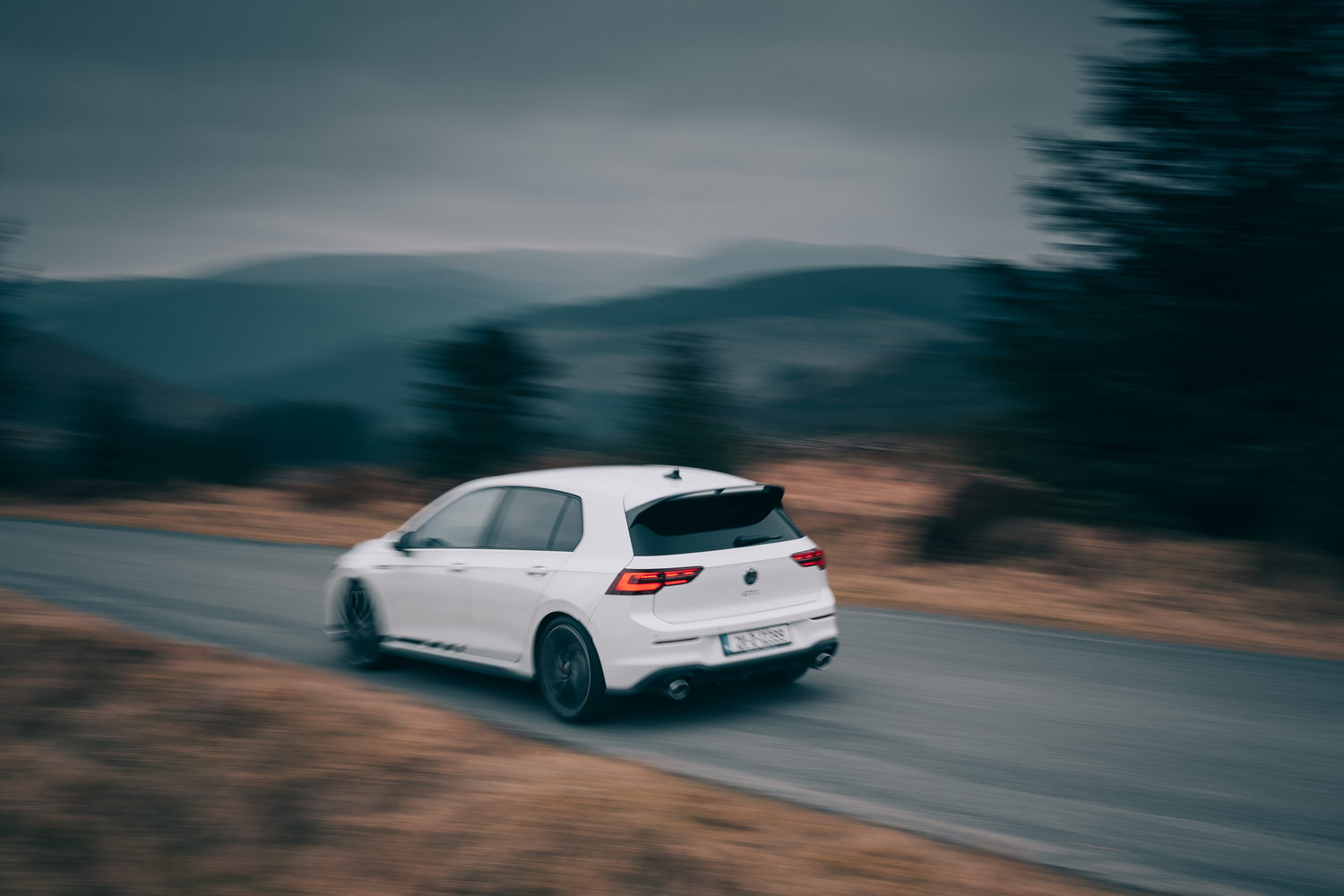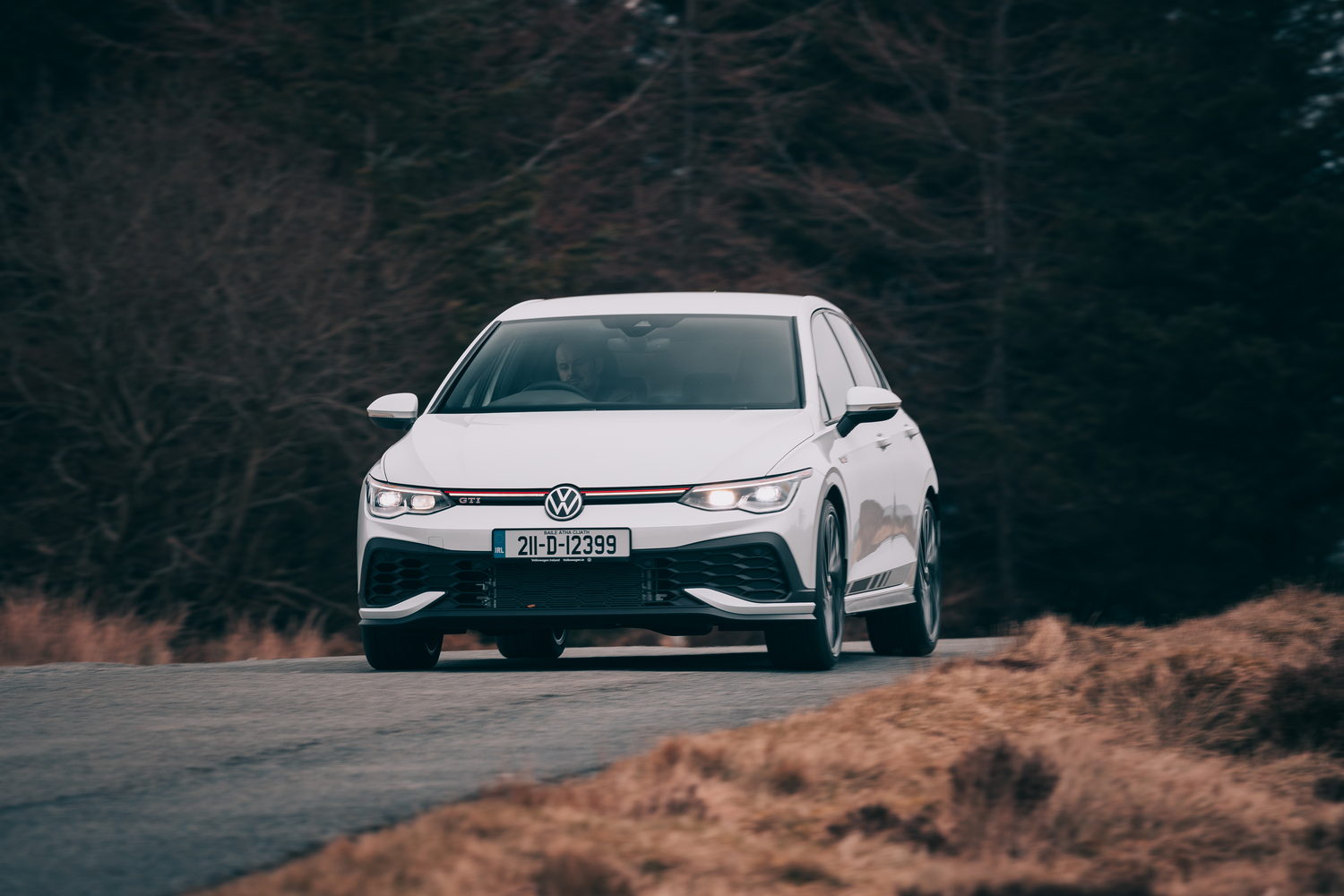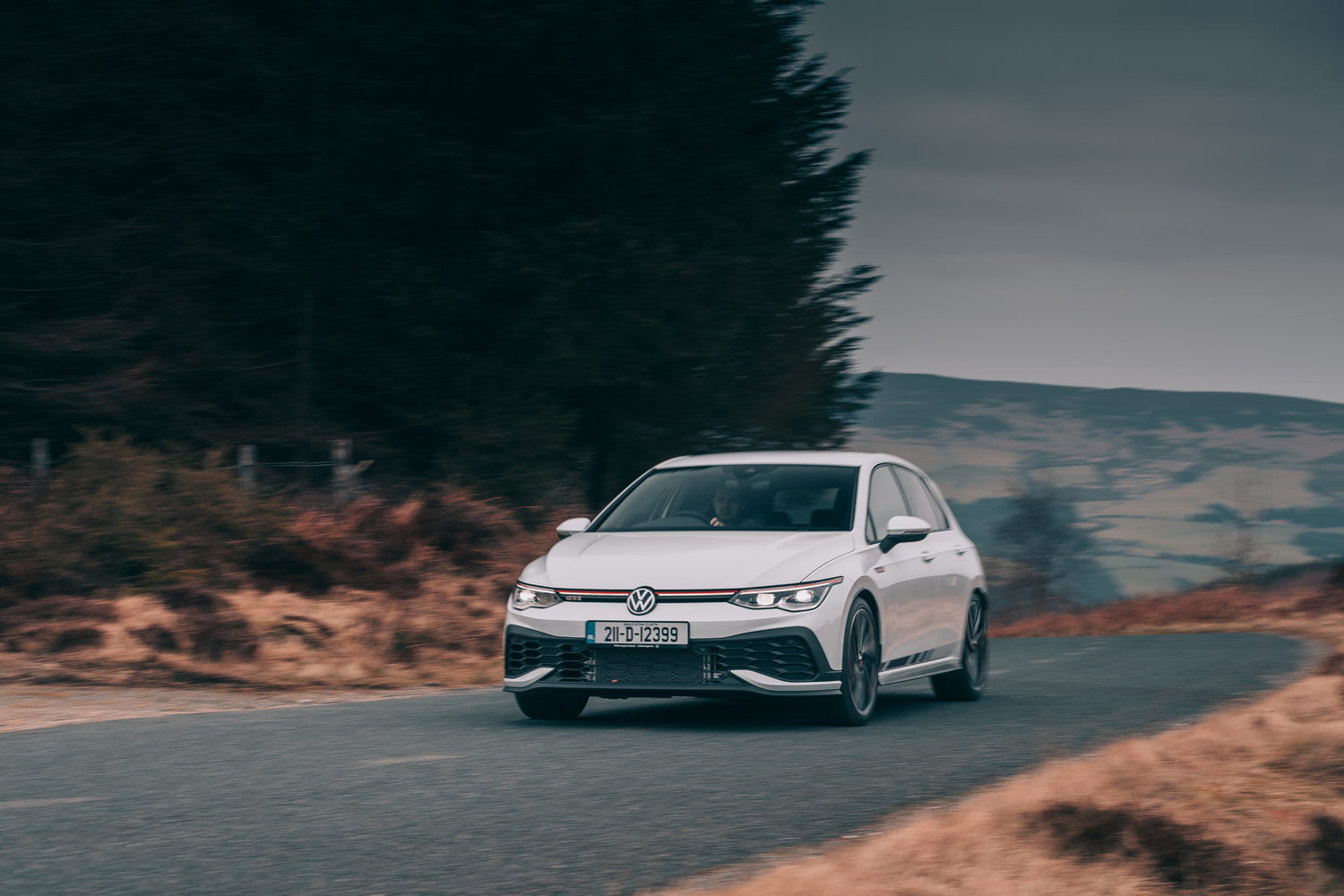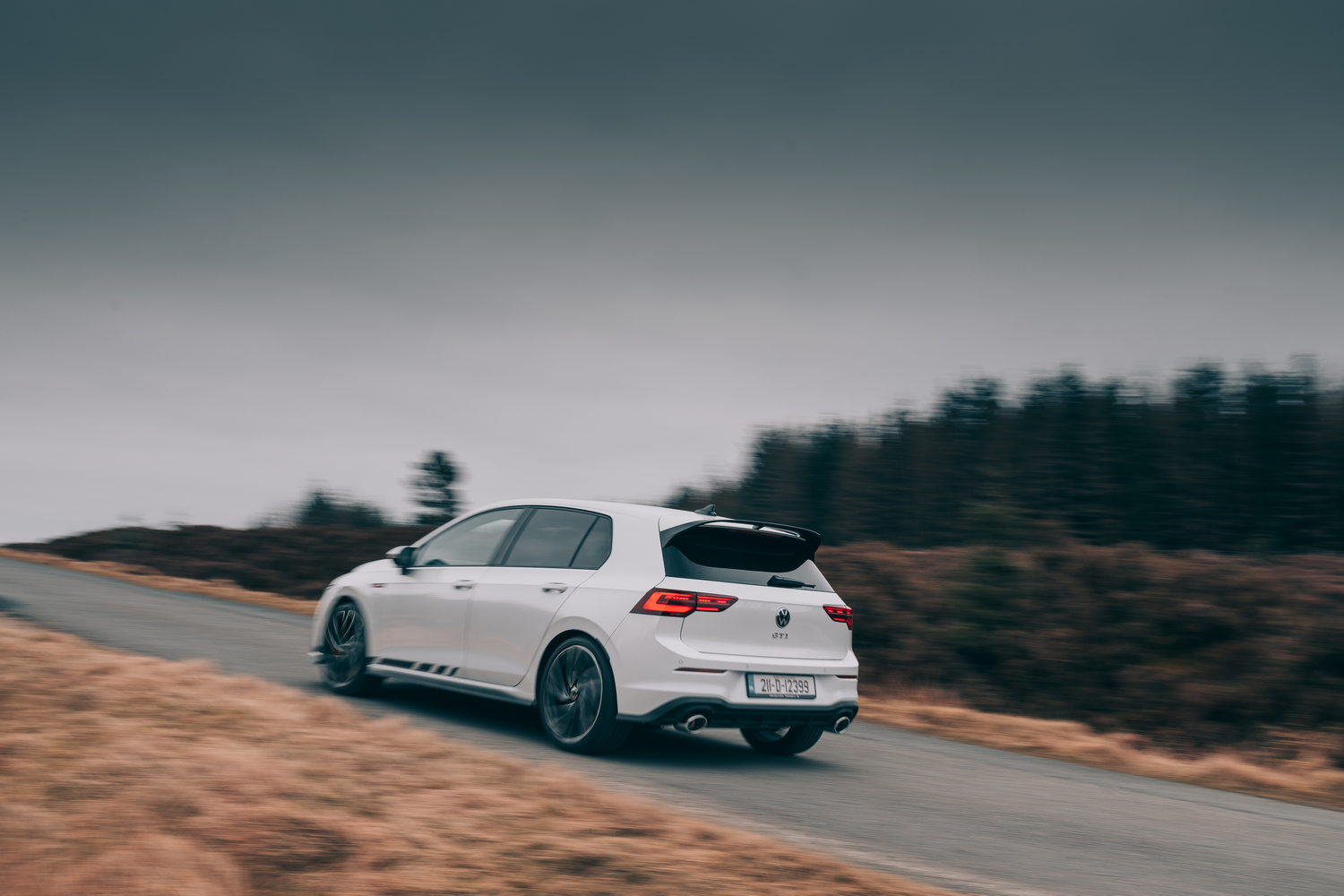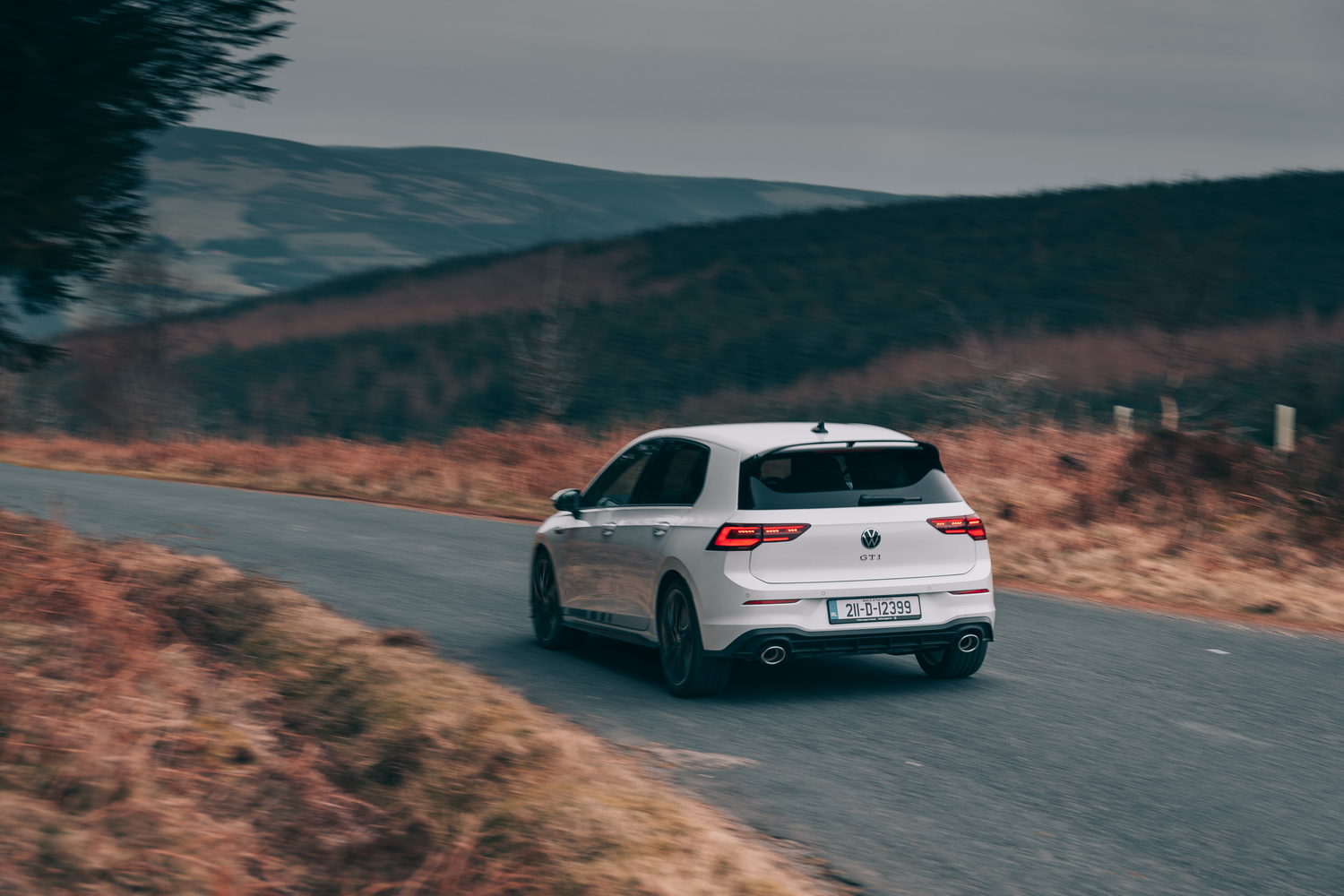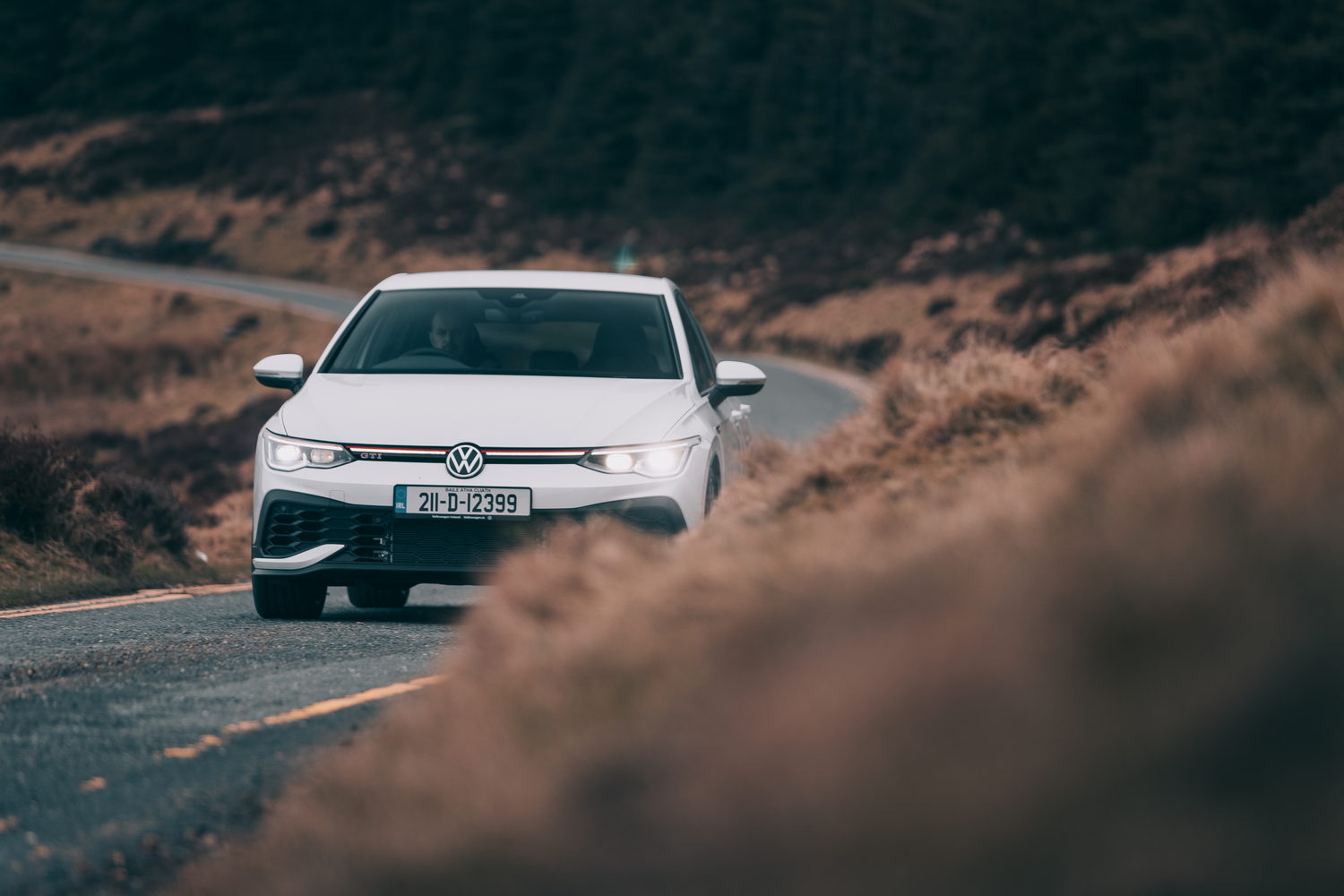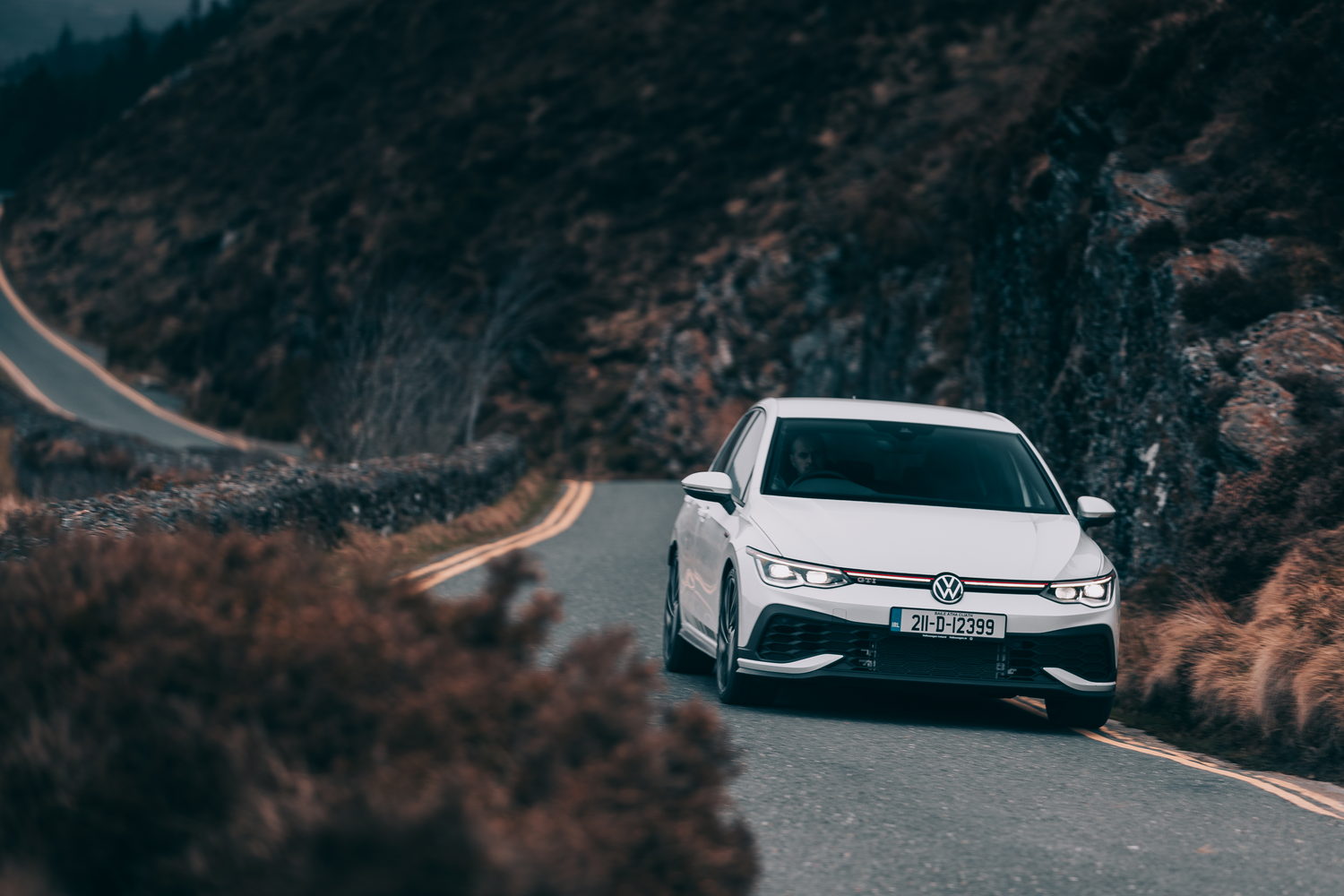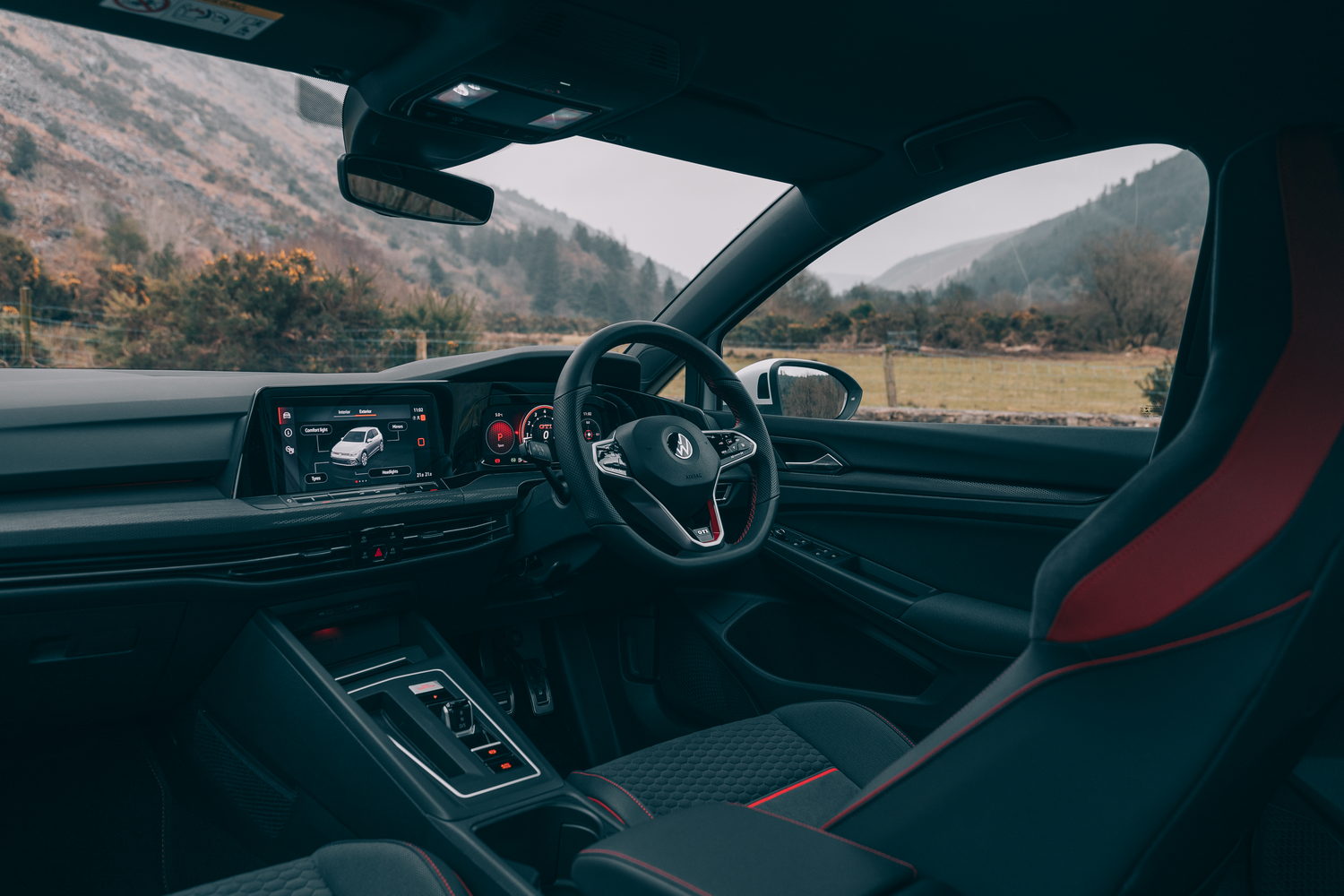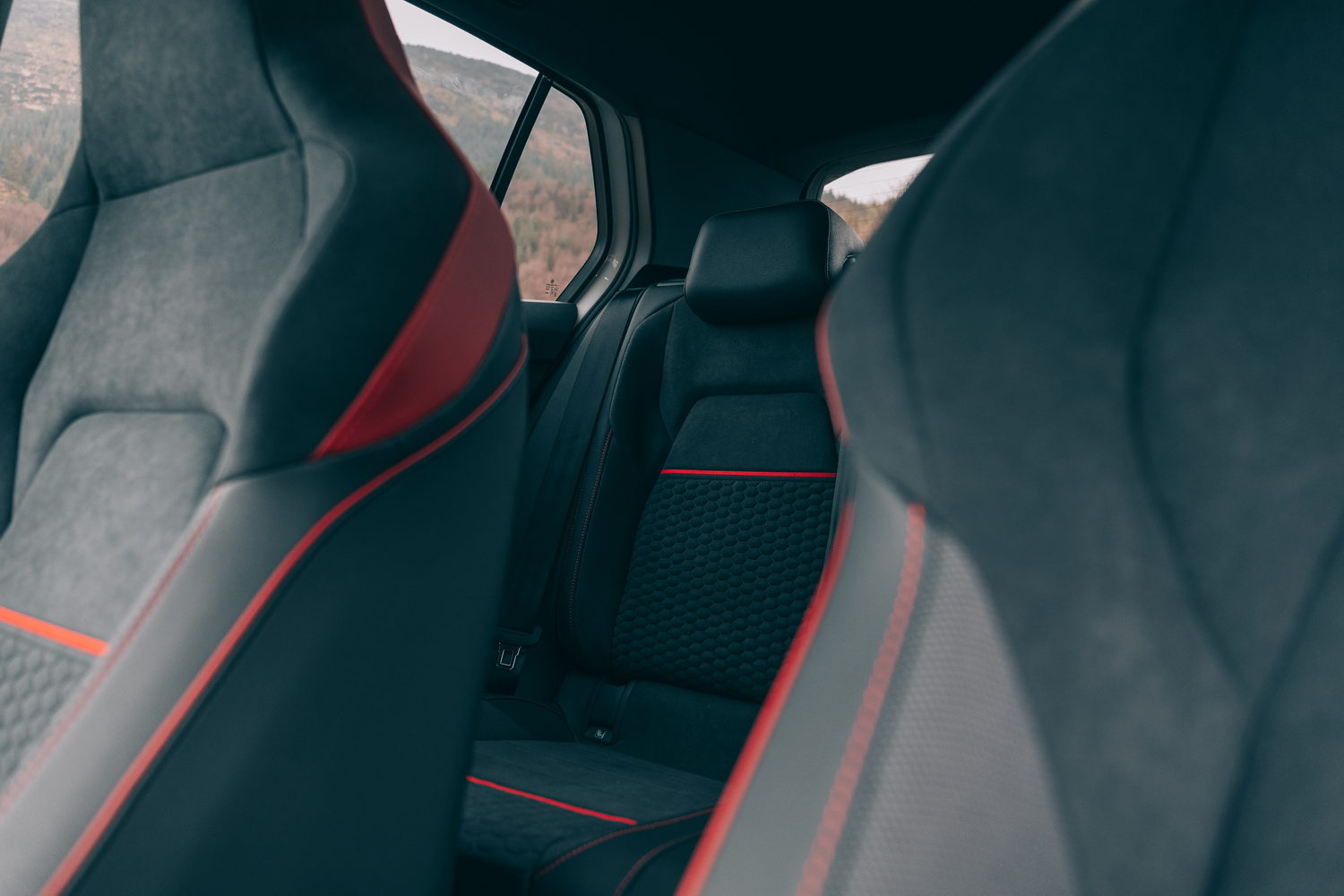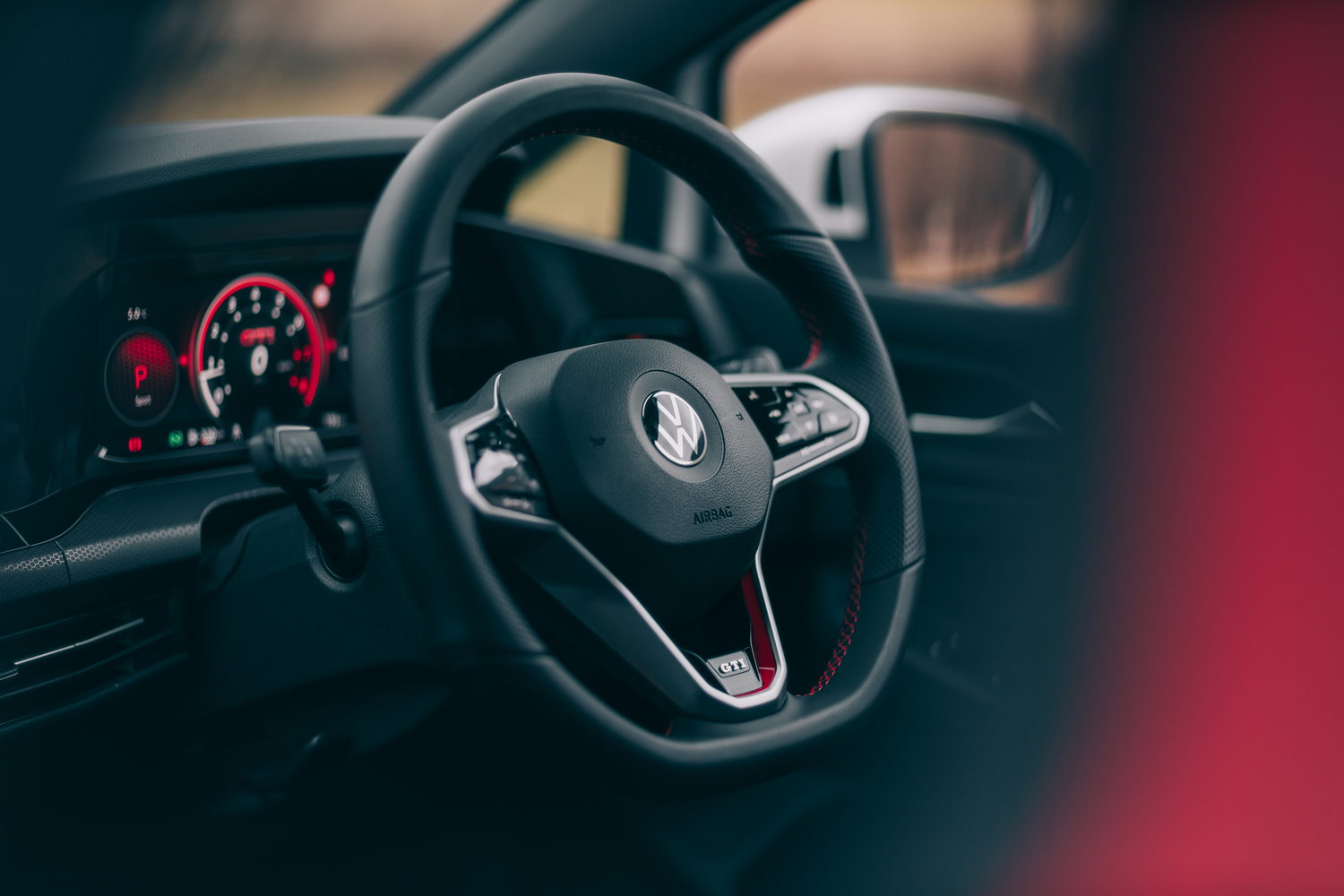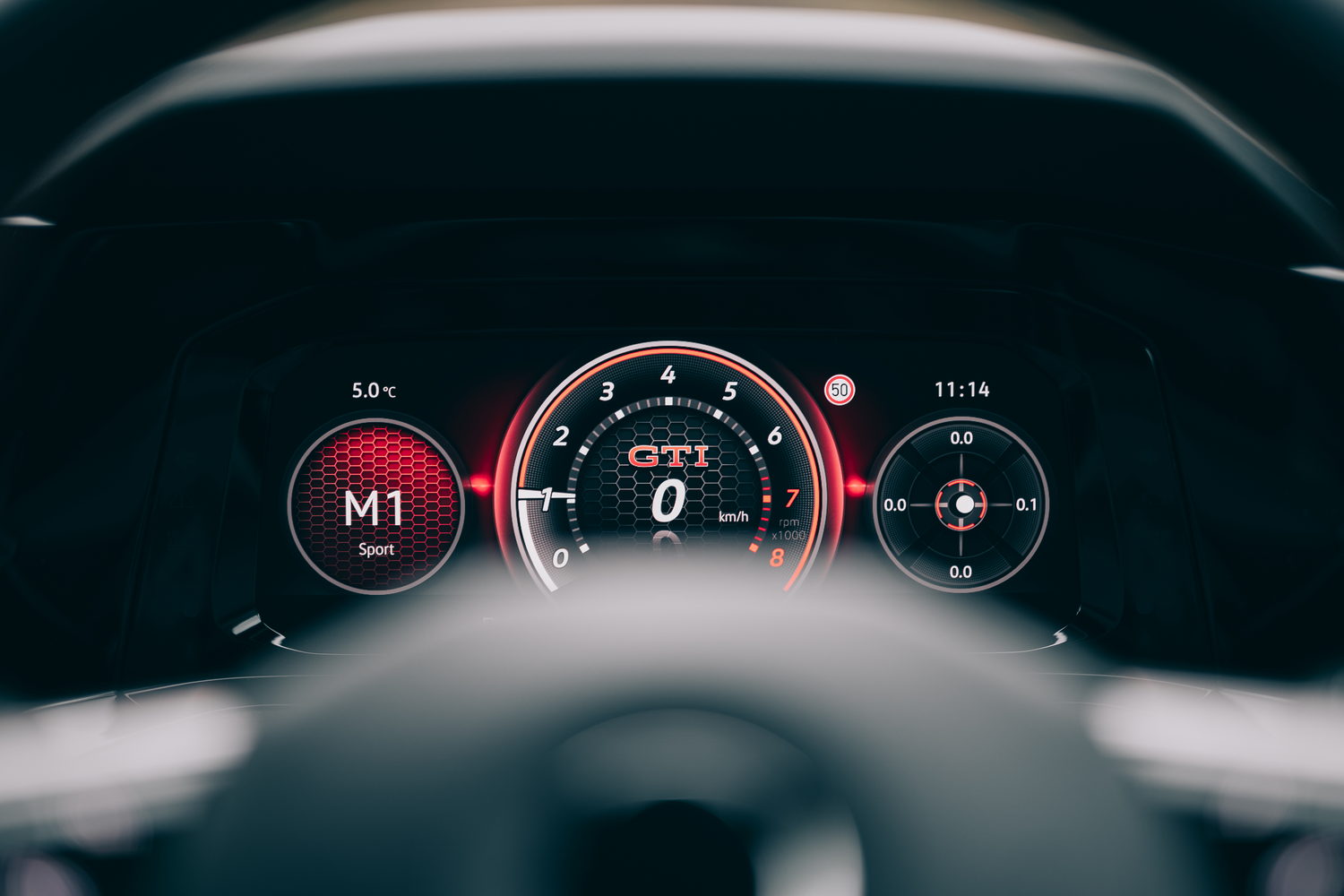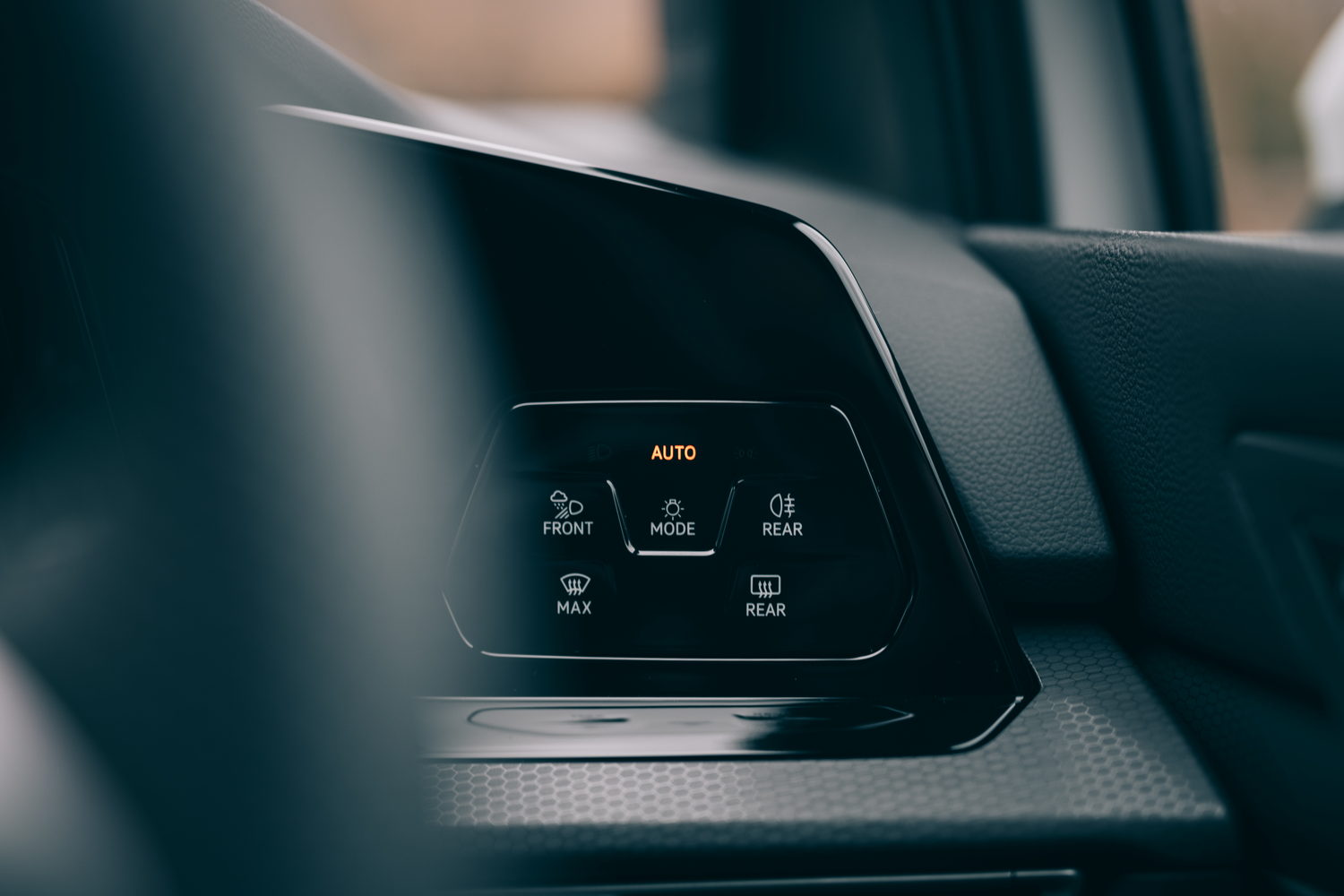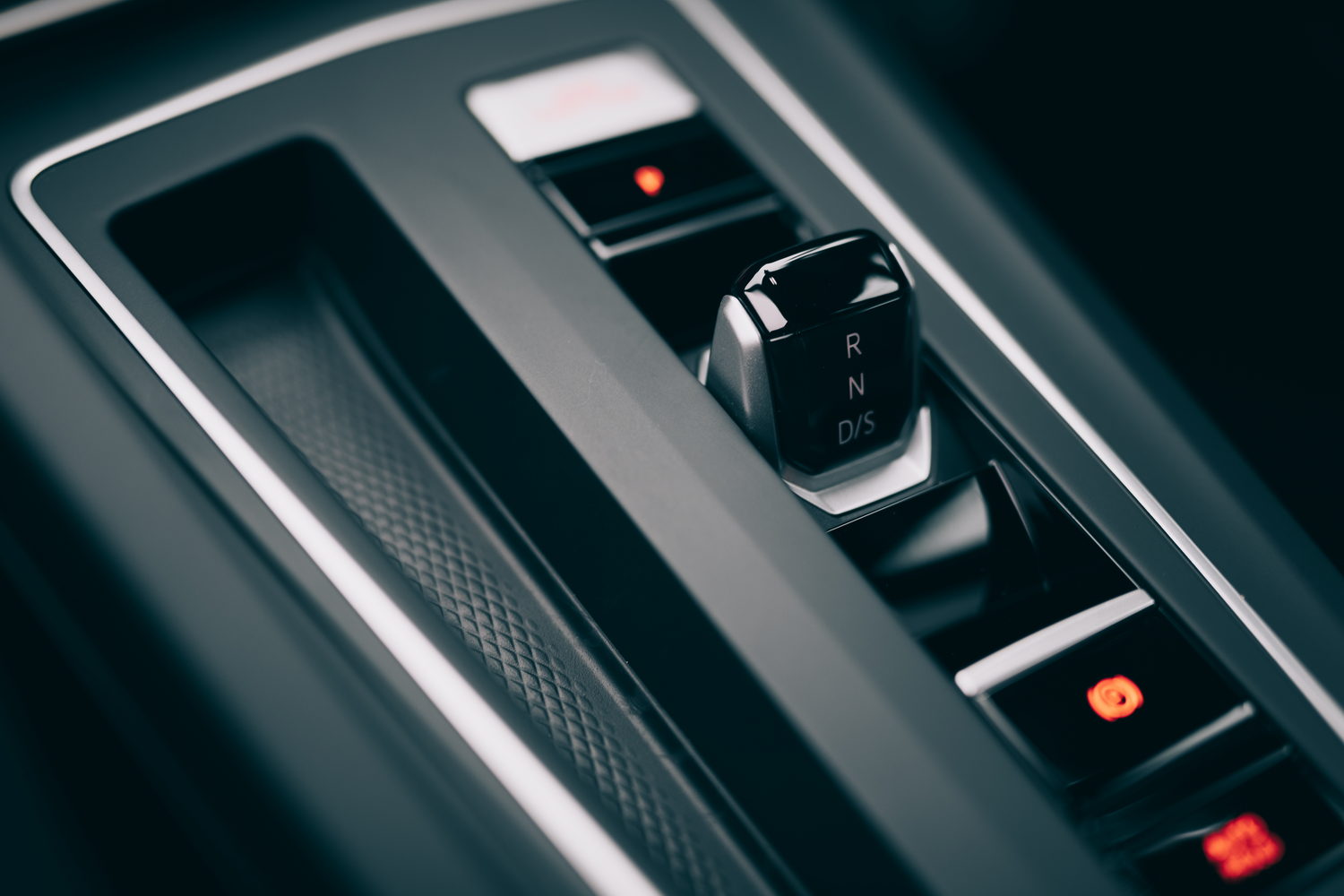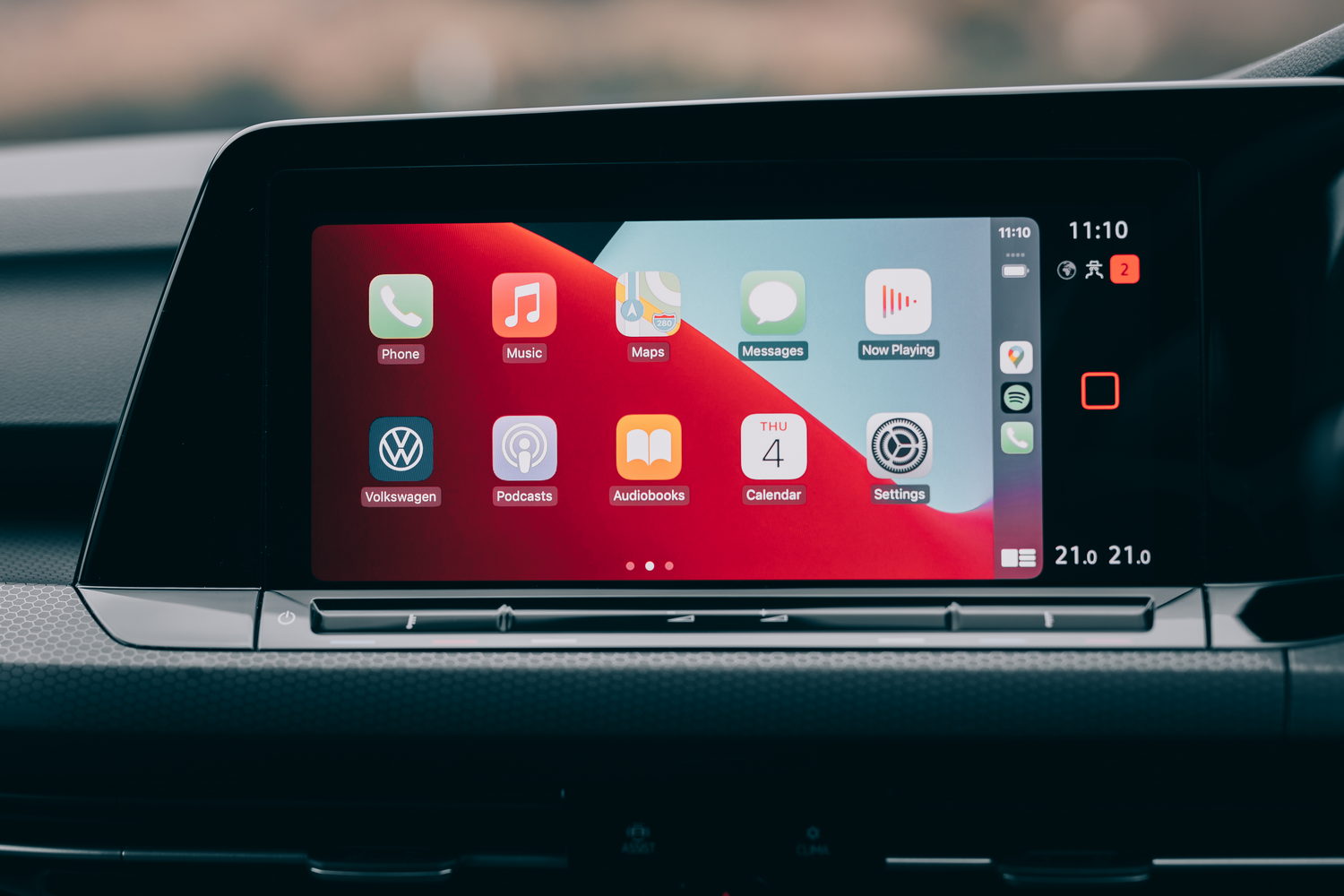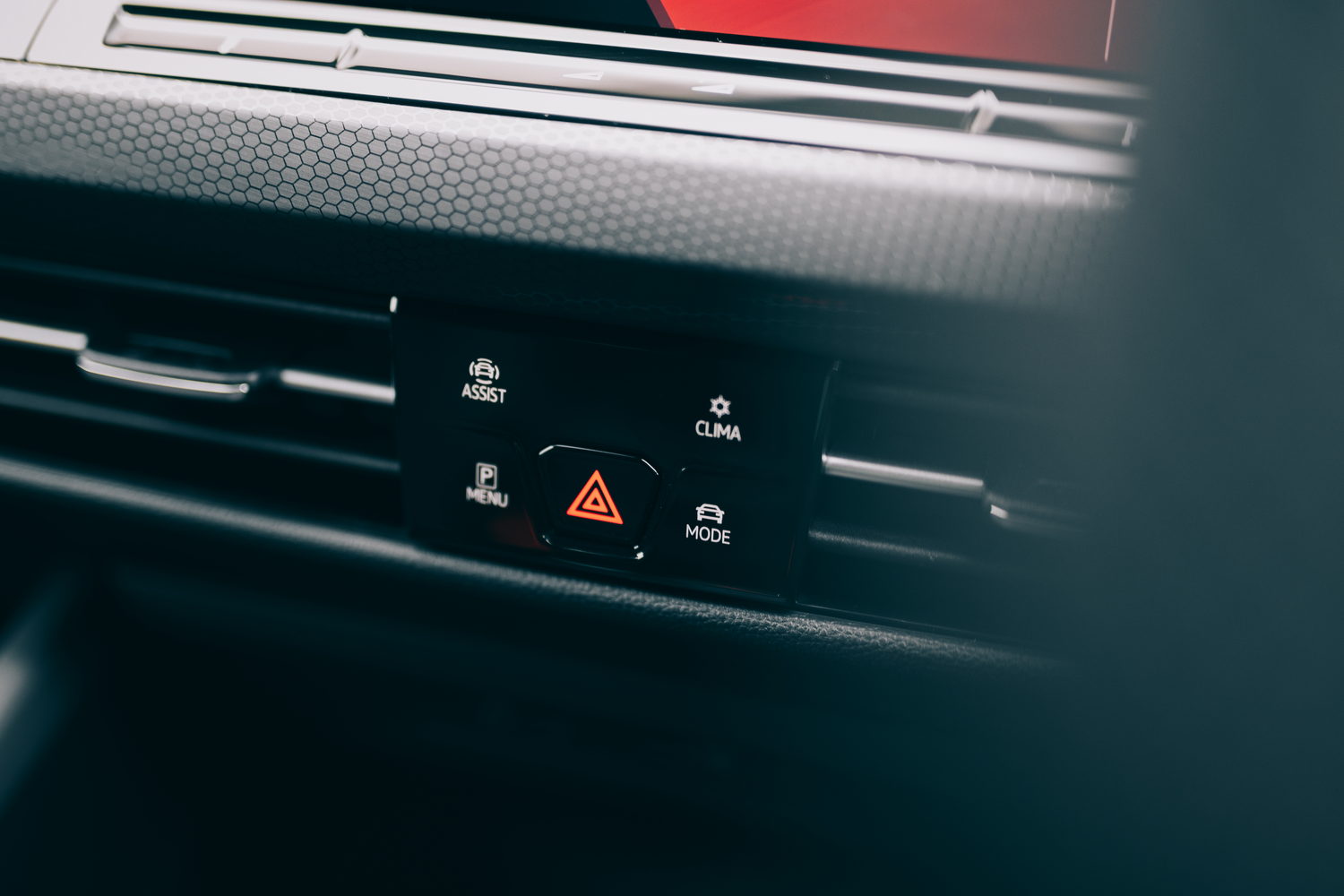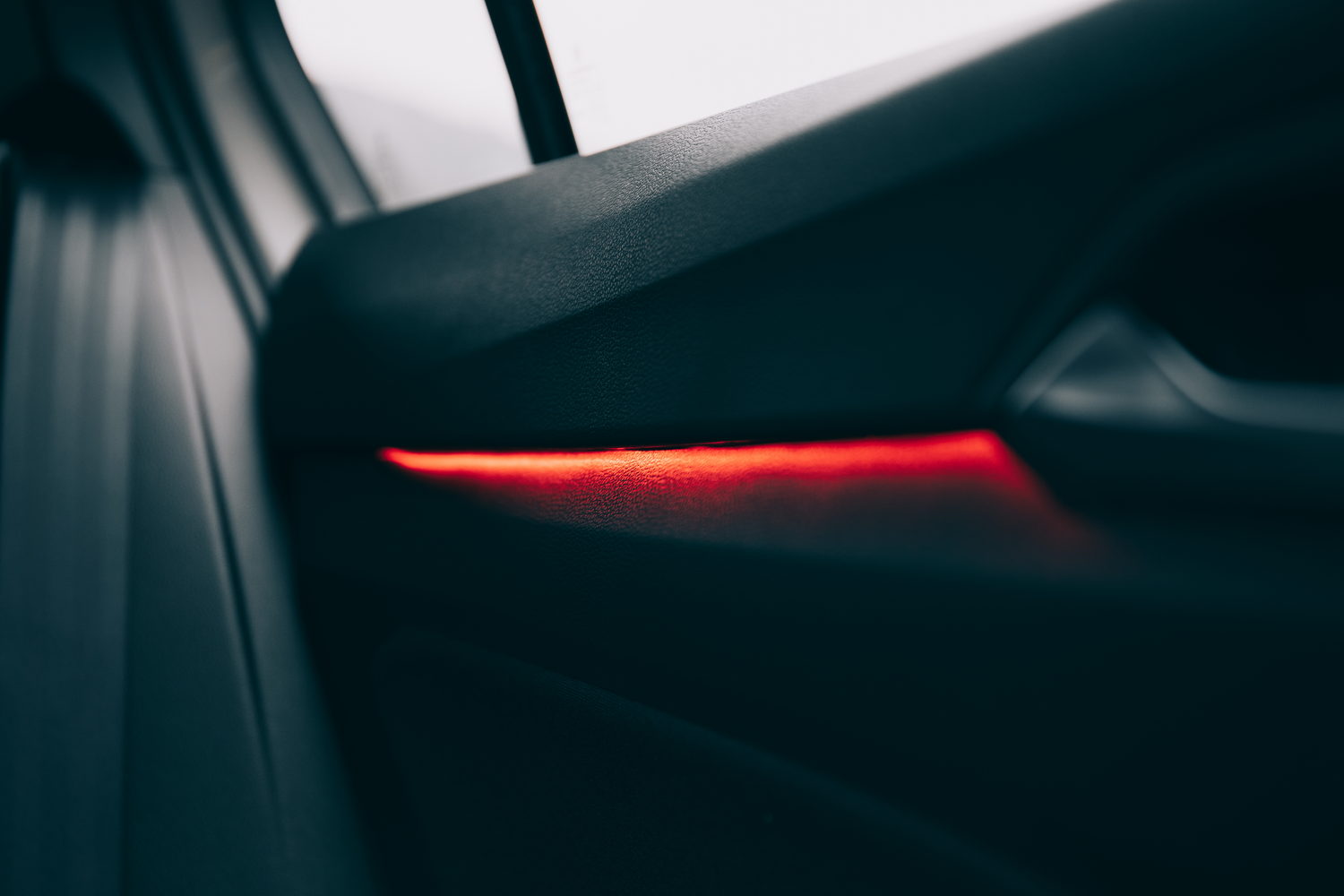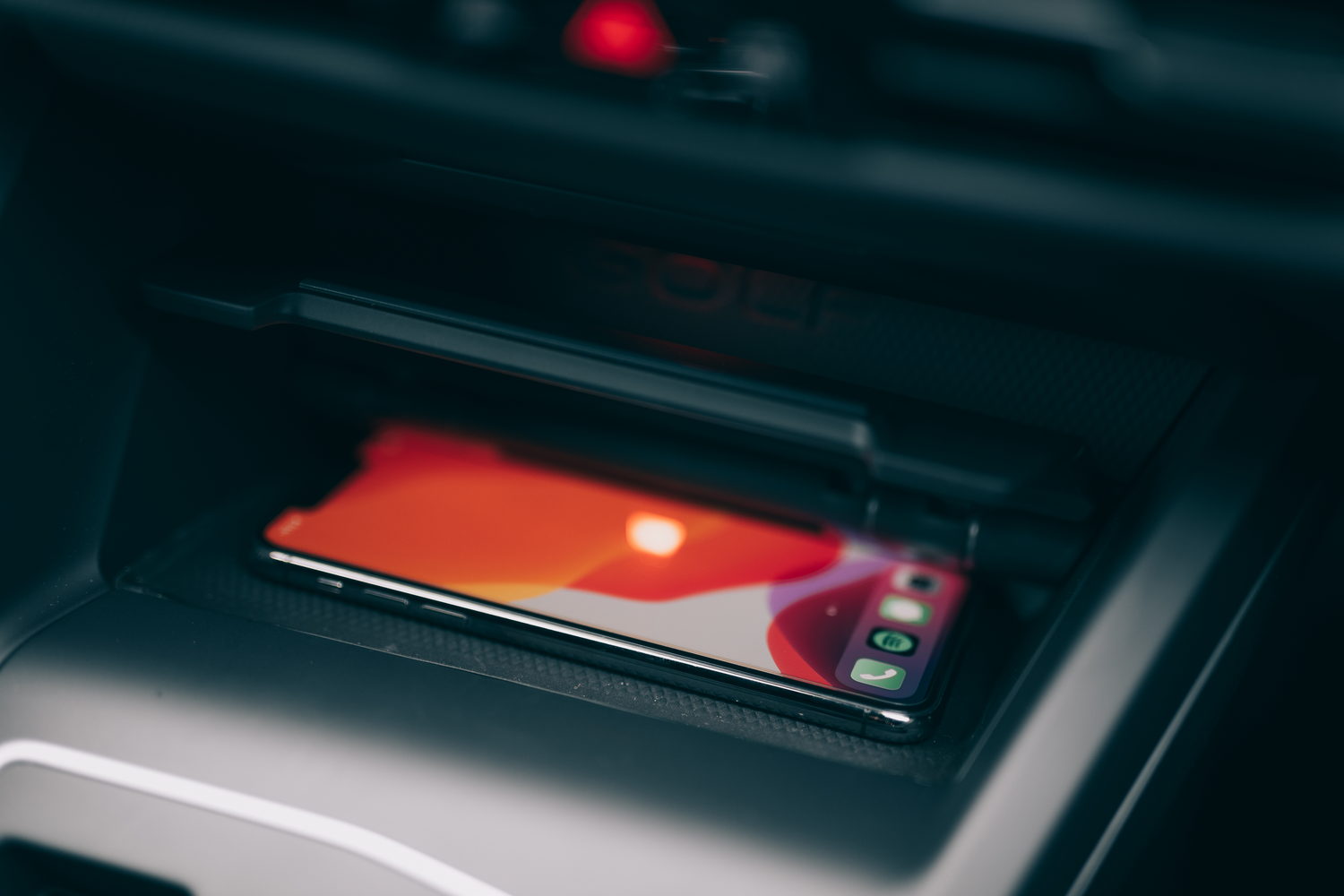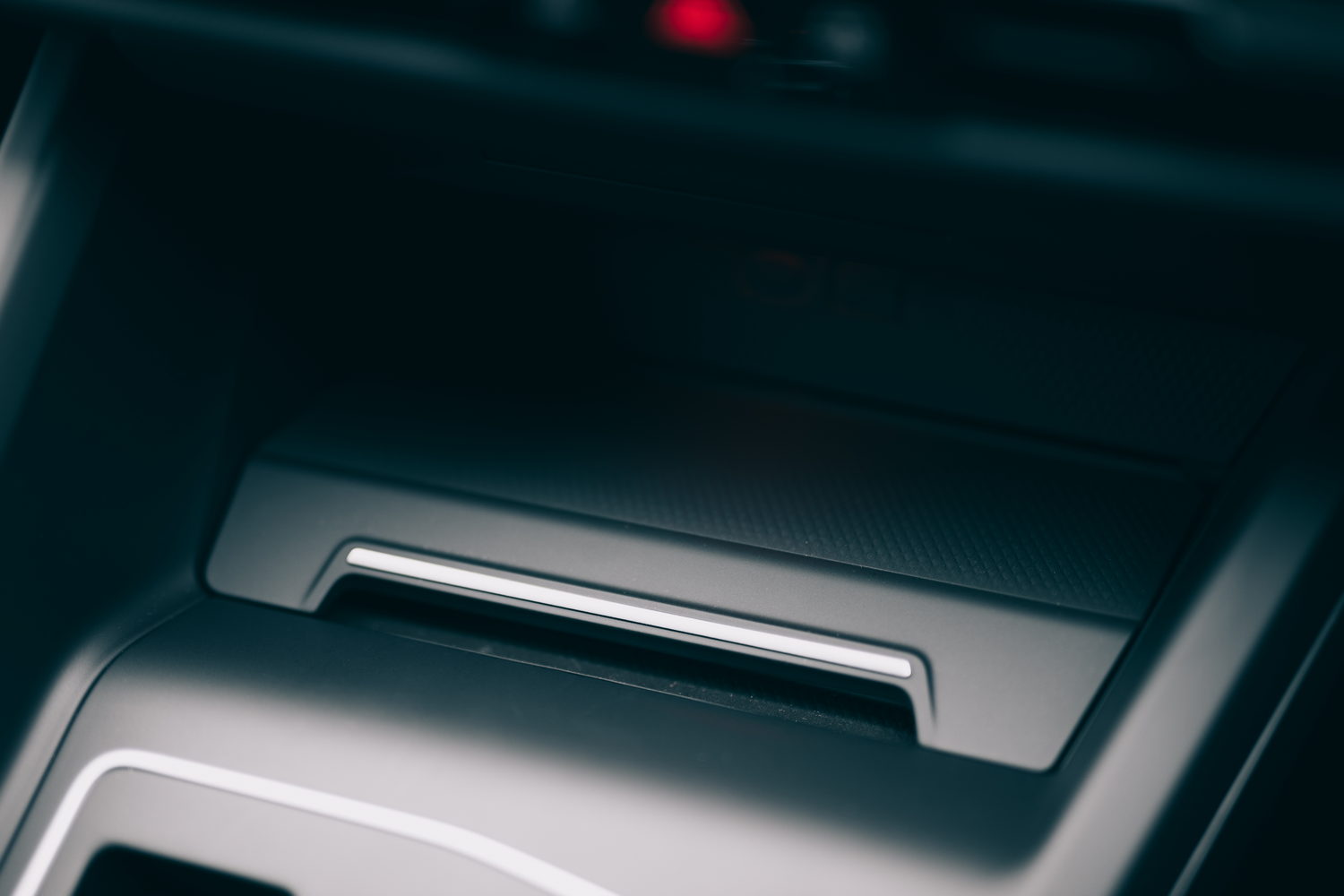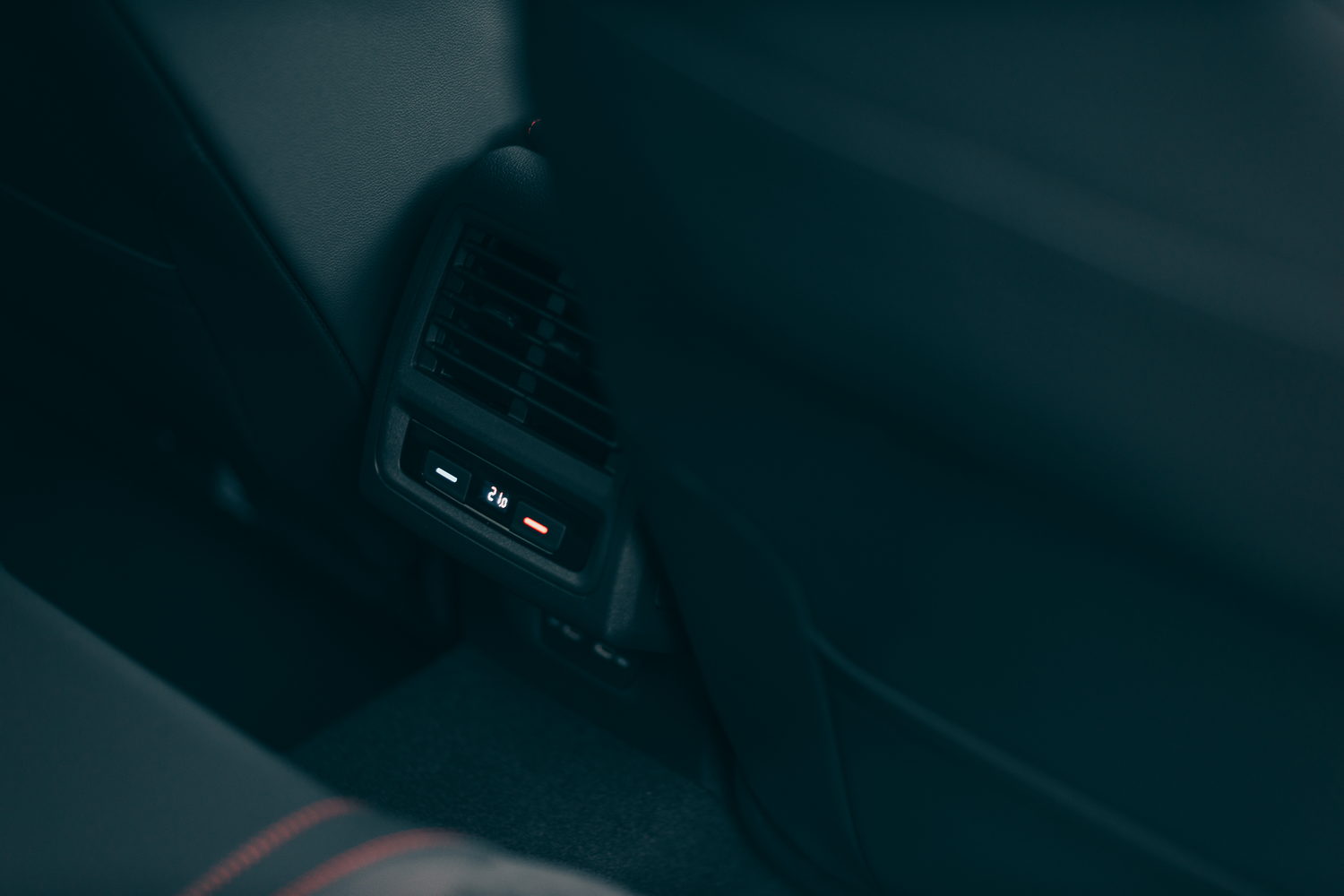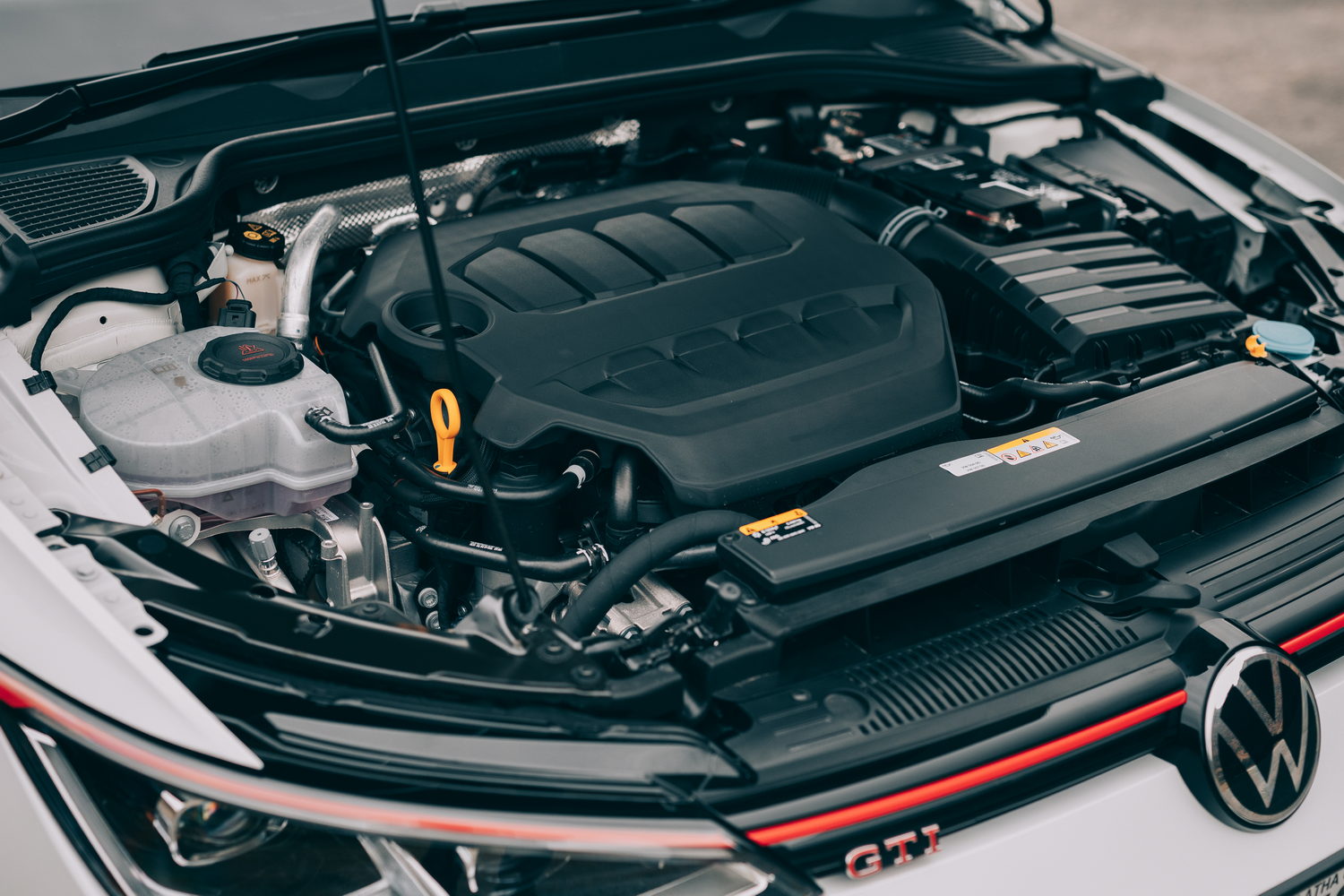Volkswagen Golf GTI Clubsport overview
Since 1976 (or 1977 if we're talking right-hand drive, and there's a strong Irish connection involved in that...) the Volkswagen Golf GTI has been the ultimate hot hatch. Well, nearly - there was a significant dip in GTI quality from the early nineties through to the early 2000s, but since the 'comeback' MkV GTI model in 2005, the hot Golf has generally been on top of the hot hatch tree. Rarely the fastest nor most powerful, it has made its mark by combining an entertaining driving experience with brisk performance, maximal usability and everyday comfort.
The eighth-generation Golf extends that legacy but adds some tantalising options. Previously, there was a vast gulf between the core 245hp Golf GTI and the mighty 300hp all-wheel-drive Golf R - now, that gulf has been bridged by this, the 300hp, but still front-wheel-drive, Golf GTI Clubsport. The name comes from a last-gasp version of the MkVII Golf GTI that was essentially a road-legal touring car, but the Golf 8 GTI Clubsport is a vastly different beast. Think of it as a GTI Plus, rather than some race-track refugee.
Here's the question, though - with increasing competition from without (e.g. BMW 128ti, Ford Focus ST and Honda Civic Type R) and within (Cupra Leon and Skoda Octavia RS), can the Golf GTI, in Clubsport form, still land its hands on the best-in-class trophy?
The Volkswagen Golf GTI model range
The Golf GTI, GTD, GTE and R models live in their own little private sphere, firewalled from the regular, more workaday Golf models.
The range kicks off with the €45,645 Golf GTI, which comes with a 245hp version of the long-serving EA888 2.0-litre TSI turbo four-cylinder petrol engine, and front-wheel drive. You can have it with a choice of six-speed manual, or seven-speed DSG automatic dual-clutch gearboxes.
Standard equipment on the GTI is lengthy, but the highlights are a ten-inch touchscreen, running VW's latest MIB3 infotainment software, a fully digital instrument cluster, a GTI-specific sports steering wheel wrapped in leather, that iconic tartan seat material (unless you've specced your GTI with optional leather seats), 18-inch 'Richmond' alloy wheels, Matrix LED headlights with always-on high beam and anti-dazzle, an LED lighting strip set into the front grille, a big rear roof spoiler along with a chunky-but-subtle body kit that includes a deep front air intake (which partially offsets the standard Golf 8's rather droopy nose styling), red brake calipers, three-zone climate control, a bevvy of safety kit including active cruise control, emergency autonomous braking and car-to-X information comms, 30-colour interior ambient lighting, front and rear parking sensors, a 'hello, Volkswagen' digital voice assistant and tinted rear and side windows.
On the mechanical front, compared to a standard Golf, the GTI (and the Clubsport) sit some 15mm lower on their springs, and both benefit from the XDS electronic front differential that helps to sniff out more traction in slippery conditions. CO2 emissions for the GTI start from 169g/km for the manual, or 167g/km for the DSG.
The Clubsport, which starts at €53,130, or €58,580 for the limited edition Clubsport 45 anniversary model, adds to that list Clubsport sports front bucket seats (which sadly come finished in a rather drab grey-and-red velour), an altered body kit and spoiler, front disc brakes that are an inch larger in diameter than the standard GTI's, speed-sensitive Servotronic steering, altered rear shock absorbers and an uprated fuel injection system. The Clubsport can, sadly, also only be had with the seven-speed DSG automatic gearbox. There's no manual option. Our test car came with optional 19-inch 'Adelaide' alloys.
The Clubsport 45 gets 19-inch alloys, '45'-specific seats and trim, two-tone roof, black exterior detailing, an even larger rear spoiler and an Akrapovič sports exhaust. Its top speed is also delimited, rising to 270km/h.
Above the Clubsport sits the 320hp, four-wheel-drive Golf R, whose price starts at €63,340. It comes with 18-inch 'Jerez' alloy wheels, premium sports seats, carbon-effect dash panels, blue brake calipers, chrome quad exhaust pipes, 4Motion four-wheel drive, a 20mm suspension drop, specific shock absorbers and surround lighting. The R's CO2 emissions start from 176g/km.
If you still fancy diesel, there's a €48,425 Golf GTD, which comes in the same spec as the GTI, but with GTD-specific seat trim, 18-inch 'Bakersfield' alloy wheels, GTD-specific exterior styling and body kit and an auxiliary heating system. Its CO2 emissions are 137-143g/km.
Finally, there's the half-electric plug-in hybrid Golf GTE, which combines a turbocharged 1.4-litre petrol engine and a 13kWh battery and electric motor for maximum outputs of 245hp and 400Nm of torque. It'll do a claimed 65km on electric power, and has CO2 emissions as low as 25g/km. You'll spot it from the outside not merely from its blue GTE badges, but also because it doesn't get the lower suspension of the GTI and GTD, sitting up tall on its springs. In terms of equipment, it gets its own, blue-tinged tartan seats, 17-inch 'Richmond' alloy wheels, GTE-specific exterior styling, a head-up display and of course an external charging port for its battery.
Volkswagen Ireland currently has a PCP finance offer for the Golf GTE, with repayments starting from €479 per month, but you can find all of VW's up to date offers here.
The Volkswagen Golf GTI Clubsport interior
The Clubsport's seats are a let-down. Not in a technical sense - they are comfortable and supportive, if unfortunately a little offset to the left - but in the sense that they're finished in a dull grey velour with red pinstriping and a hexagonal waffle effect. They lack the visual charm of the regular GTI's red tartan seats.
The dashboard and interior are essentially those of the standard Golf 8, so there's a lot of good stuff, and a few bum notes. The best of the good stuff is the palpable sense of quality - there's not a huge gap between the Golf and its stablemates, the SEAT (Cupra) Leon and Skoda Octavia, but it is there. In fact, I'd go so far as to say that the Golf's cabin looks and feels a touch better made, and more welcoming, than that of the more expensive Audi A3.
The little toggle switch that allows you to select drive from the DSG automatic gearbox is as neat-looking, and nicely tactile, as it's ever been, but the shame of it is that it doesn't seem to liberate any extra practical space on the centre console - all you get compared to a manual Golf GTI is an extra, shallow, storage tray that will hold a couple of pens, or a very small slice of pizza.
The digital instrument pack is lifted from the regular Golf, but gets a GTI-specific screen, which puts a red-tinted rev counter front and centre, with the digital speedo in the middle of that. You can customise the other display areas of the screen, and there's even a lap-timing stopwatch should you wish to take your GTI Clubsport on track.
In the centre is the ten-inch infotainment screen, and again it looks good. There's wireless Apple CarPlay and Android Auto connectivity in this Clubsport (wired connections are standard on the regular GTI) and, in a very neat touch, a little flip up lid over the wireless phone charging pad. This does two things - it puts the phone out of your line of sight when driving, and it also stops the phone flying around when you're pressing on a bit on a twisty road. Very neat, and normally the sort of thing we'd expect to see from Skoda.
Alas, the infotainment system is as fiddly and awkward as it has been since the Golf 8 was launched. The screen often gets stuck in or between menus, it's too easy to press a function button when you wanted to swipe between screens, and while we're getting used to the touch-sensitive 'sliders' for the radio volume and heating, they're nowhere near as intuitive as proper buttons. Also, guess where the buttons for the rear and front demisters are? No, not in the climate menu, as you might expect, but on the little satellite touchpad, behind the steering wheel to the right, that also controls the headlights and fog lights. Seriously, Volkswagen - the whole ergonomic and infotainment layout of the Golf 8 needs to go back to the drawing board, and fast.
There are some compensations. The front seats have lots of adjustment, so even with the slight offset it's easy to get comfortable. Space in the back, even with the bulky bucket seats up front, remains good and, while the Clubsport loses a couple of litres compared with a regular Golf, there's still a useful (if hardly class-leading) 374 litres of luggage space. Helpfully, there's an adjustable boot floor to give you a flat loading floor (at the cost of a few litres of absolute storage) and you can stash the solid luggage cover under there if you need to fold down the back seats (easily done and they fold almost totally flat) to fit in any large objects. Or pets.
Rear seat passengers get their own climate controls (which can be locked out by those sitting in the front) and there are four USB-C sockets; two in the front and two in the rear. There's a slightly small storage box under an adjustable armrest between the front seats and a double cupholder, with one adjustable holder, in front of that. The Golf must be commended for its front door storage bins - they're huge and deep, and partly make up for the smaller armrest storage.
The Volkswagen Golf GTI Clubsport driving experience
Well, this is what it's all about, isn't it? A Golf GTI should combine a rare balance of engaging high-performance fun with everyday usability and comfort. Pleasingly, the GTI Clubsport does just that.
You can select from four driving modes - Eco, Comfort, Sport and Individual. There's an optional fifth mode - 'Nürburgring' - that sets the Clubsport up for that fearsome German racetrack by turning all the driving settings to maximum sportiness, but the adaptive dampers on their softest level to cope with the 'Ring's bumps. Sounds perfect for an Irish backroad, but sadly it wasn't fitted to our test car.
That's OK though, because the Clubsport is perfectly capable without it. Set everything to Sport and the ride does become a touch choppy, but you'll only feel the worst of that on really poor backroads or city streets. There's an augmented engine note in Sport, too, which you'll have your own feelings about, as well as a 'pop map' for the exhaust.
To be honest, Sport mode is just a touch redundant, aside from the faint extra weighting it brings to the steering and the slightly sharper throttle response. Realistically, in any mode the GTI Clubsport is as fast and as responsive as you would want any car to be. The 0-100km/h time of 5.6 seconds actually feels a little pessimistic when you're driving - the Clubsport is subjectively more energetic than that. In fact, you'll have to be careful; the engine is sufficiently refined, and the throttle pedal calibrated so that it's all too easy to find yourself accidentally well above the posted speed limit. Pay attention, folks...
When you do find an appropriately twisty road, the Clubsport feels balanced, agile and pointy, but not overly-so. You get the feeling that it has been carefully tuned and tweaked so that it's a bit sharper than the regular GTI, but not as on-point as the more expensive Golf R. That, in some ways, is a disappointment, as is the fact that the XDS electronic differential doesn't feel as positive and as energetically traction-finding as it did in previous generations. It, without question, makes the Clubsport massively more surefooted than it might be when on slippery, unpredictable roads, but it has lost the old 'race car' feeling that it used to have.
The steering is also, if we're being critical, just a touch too light and a little too fluid for ultimate fun. The Honda Civic Type R has slightly more natural-feeling, talkative steering than the Clubsport. However, we are splitting hairs here - even taking all of this into account, the GTI Clubsport is a staggeringly good car to drive across country. It can tuck its nose deep into a tightening apex, without even a hint of stability lost from the rear, and that's with a 55hp climb in power from the old Golf GTI Performance Pack. Why did we think, all those years, that the old Golf R needed all-wheel drive to manage 300hp? The Clubsport makes doing so look easy...
Thankfully, it's equally as adept at handling everyday driving. On a long run, the only black mark against it is too much tyre roar (a common problem with cars built on Volkswagen's MQB platform). It's even economical. Across a week of mixed condition driving, we easily equalled the official WLTP fuel economy figure, but on some longer, gentler runs we saw consumption as low as 5.8 litres per 100km. That's exceptional for a car with such potent performance.
Our only significant criticism is that, in spite of the uprated front brake discs, the Clubsport can still feel a touch under-braked at times. A little more responsiveness, and a firmer brake pedal, would be welcome.
Alternatives to the Volkswagen Golf GTI Clubsport
Obviously, the Clubsport is going to have to fight off internal competition from SEAT's high-performance Cupra brand, and the Skoda RS range. For €54,245 you can have the Cupra Leon with the same 300hp engine and mechanical package, and with a body that's arguably more stylish and more desirable. There's even an estate option (something the Golf currently lacks in the Irish market) that comes with four-wheel drive and 310hp, for €59,420. That's a hugely tempting car.
So too is a Skoda Octavia RS. You can't have the Skoda with the 300hp engine, but you can still have a very respectable 245hp in either petrol or plug-in hybrid forms, or a 200hp TDI diesel, with prices starting from €46,810. The hot Octavia is a deeply handsome car, and hugely practical too, especially in Combi estate form.
The Honda Civic Type R isn't currently listed on Honda's Irish price list, but in general it's pretty close to the Clubsport in terms of cost, offers a little extra power, a more outré body kit (unless you go for the toned-down GT version) and a chassis and steering setup that provides a rarely seen blend of performance and everyday comfort. It is a deeply wonderful car.
Finally, there's the BMW 128ti. It's a little less powerful than the Clubsport with 265hp, but it's a sweet car to drive with incisive steering and a setup that's close to perfect for Irish roads. No manual option (sadly), and it's not the prettiest car out there, but it has a cabin that's even nicer than the Golf's for similar cash (prices start from €48,953) and has the inestimable appeal of the BMW badge.
Our verdict on the Volkswagen Golf GTI Clubsport
As with the rest of the Golf 8 range, there's the danger that the current GTI and the Clubsport feel as if they're in a holding pattern, while Volkswagen tries to work out how to eventually combine the Golf and the ID.3 line-ups into one, collective, electric whole. The current GTI and R line-up doesn't represent a massive leap forward from the old Golf MkVII, something that can be said for the Golf 8 as a whole, and such items as the awkward infotainment system provoke irritation rather than satisfaction.
That said, the Golf GTI Clubsport is still a brilliant hot hatch, with fantastic agility and speed, great stability, everyday comfort and practicality, and the sheer kerbside appeal of that legendary GTI badge. It's not as much out-and-out fun as the previous MkVII GTI (nor, for that matter, the brilliant 2005 MkV), but we'd say it has become more surgical, rather than clinical. Still the best in class? Probably, but only just. The competition is getting ever closer.
What do the rest of the team think?
I too find the latest Volkswagen digital infotainment system massively frustrating. It detracts from the GTI experience, as does the surfeit of shiny black plastic everywhere inside that gets all smeared with fingerprints. I also agree that the seats don't look very special. The exterior of the car helps it stand out, though. In driving terms, I started my time in the car at normal speeds on normal roads and was a little underwhelmed. It didn't feel very special and the firm damping got on my nerves. Just before I handed it back, however, I had the opportunity to properly test its chassis and special differential and came away grinning. It still has the ability to do that, even if you have to go searching for it. Perhaps it's a little too grown up now.
Shane O' Donoghue - Editor
The Volkswagen Golf GTI Clubsport is one of those cars that makes you re-evaluate what you thought hot hatches were capable of doing on the road. It is a car that comes into its own when you begin to ask more of the chassis and it is then that you get a taste for how honed it is. Beyond seven-tenths it becomes staggeringly good and proficient at devouring the road ahead. There isn’t much more that Volkswagen could do to the GTI Clubsport to make it better out of the box - except maybe add a manual gearbox.
Dave Humphreys - Road Test Editor

